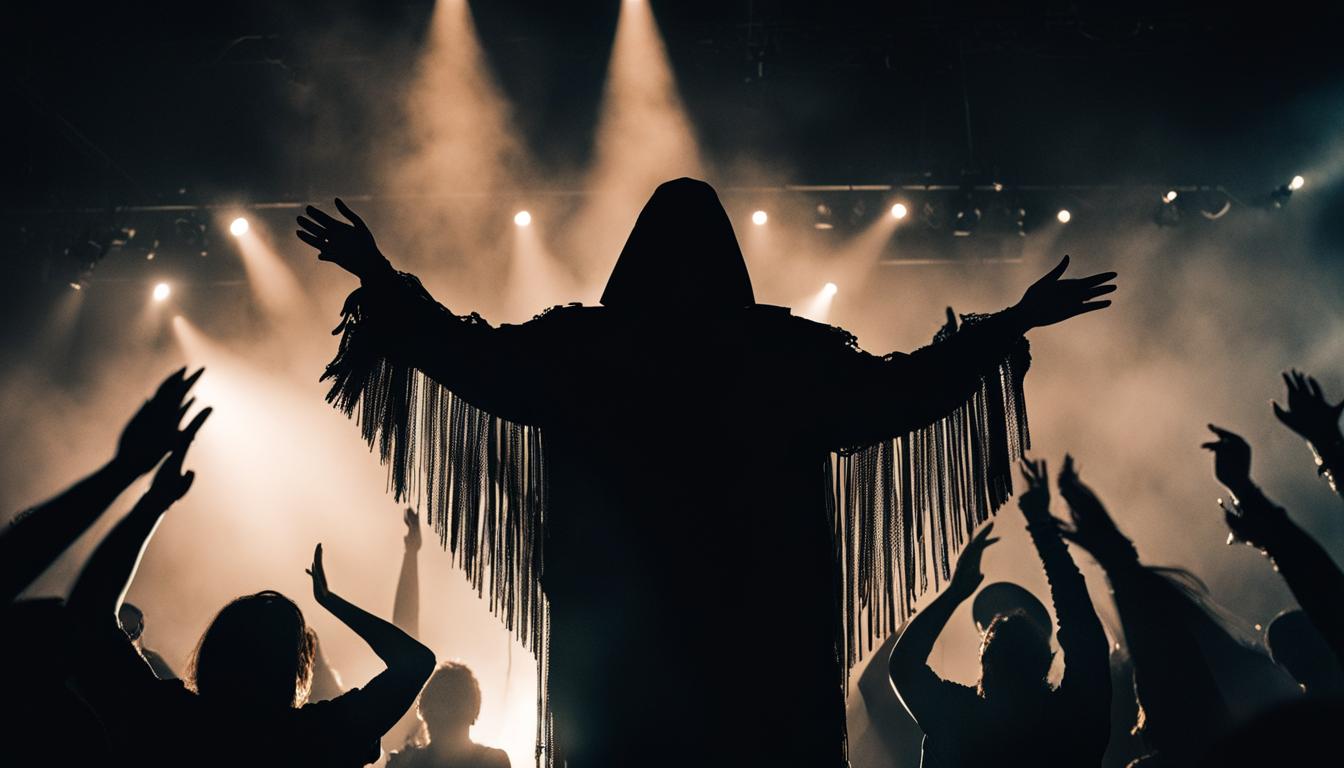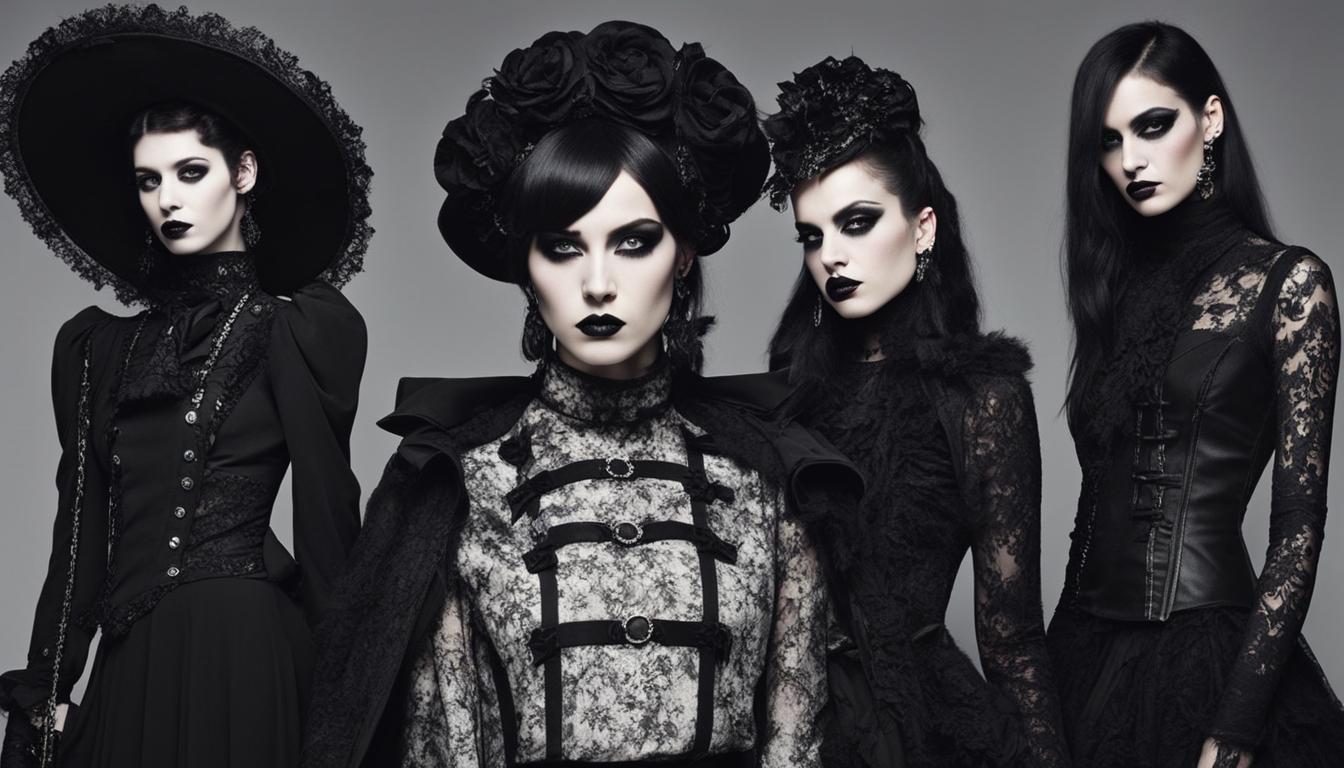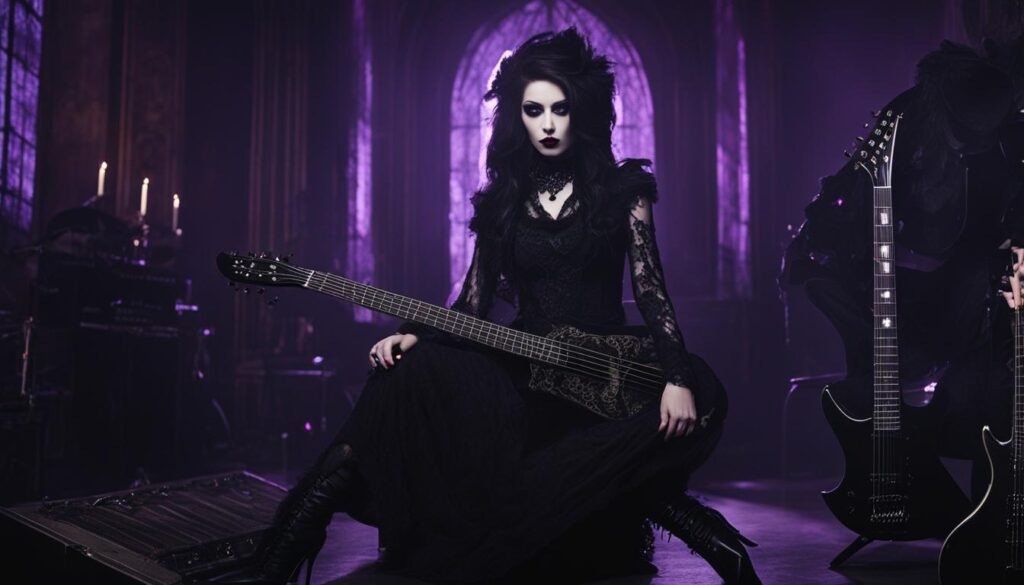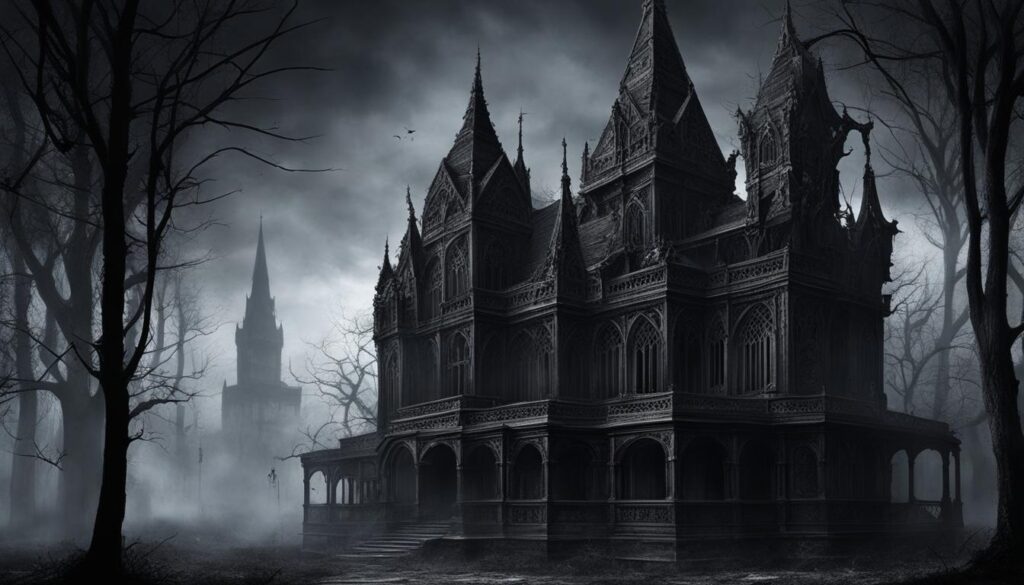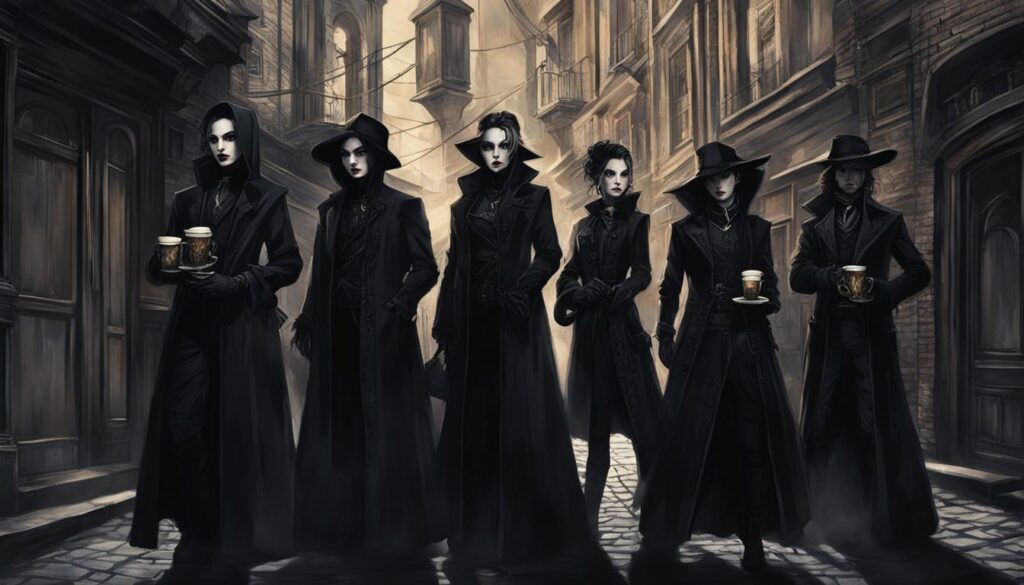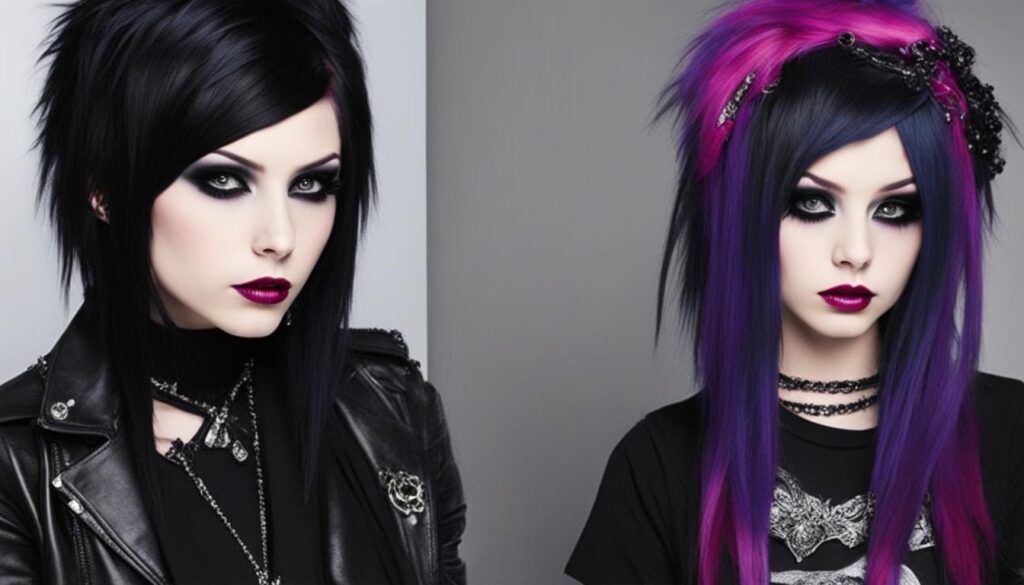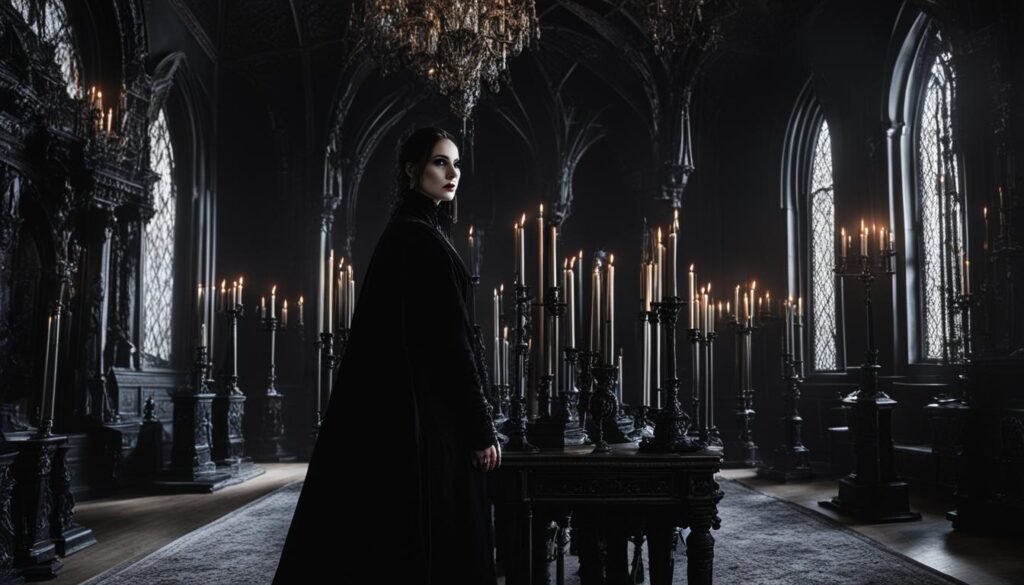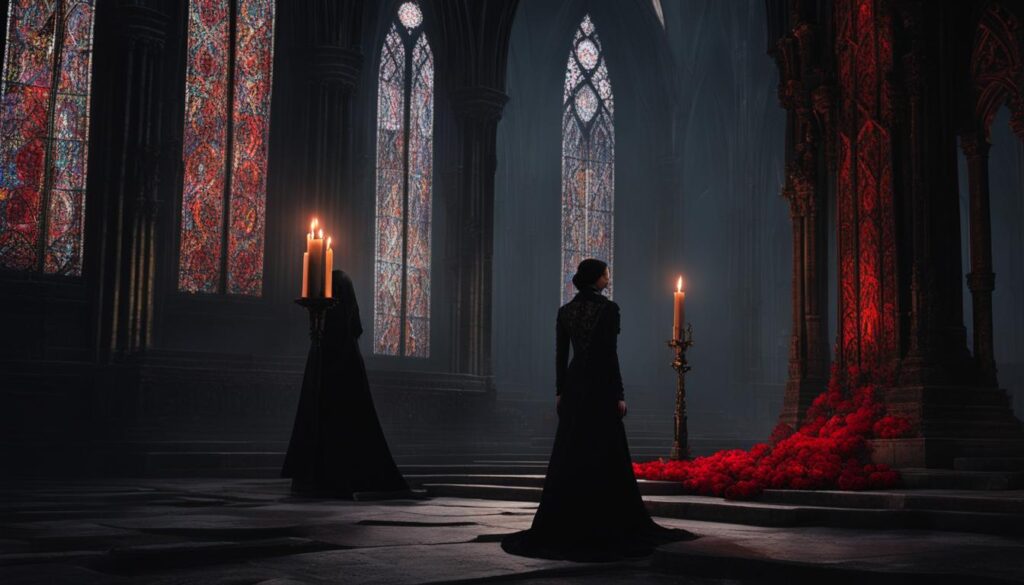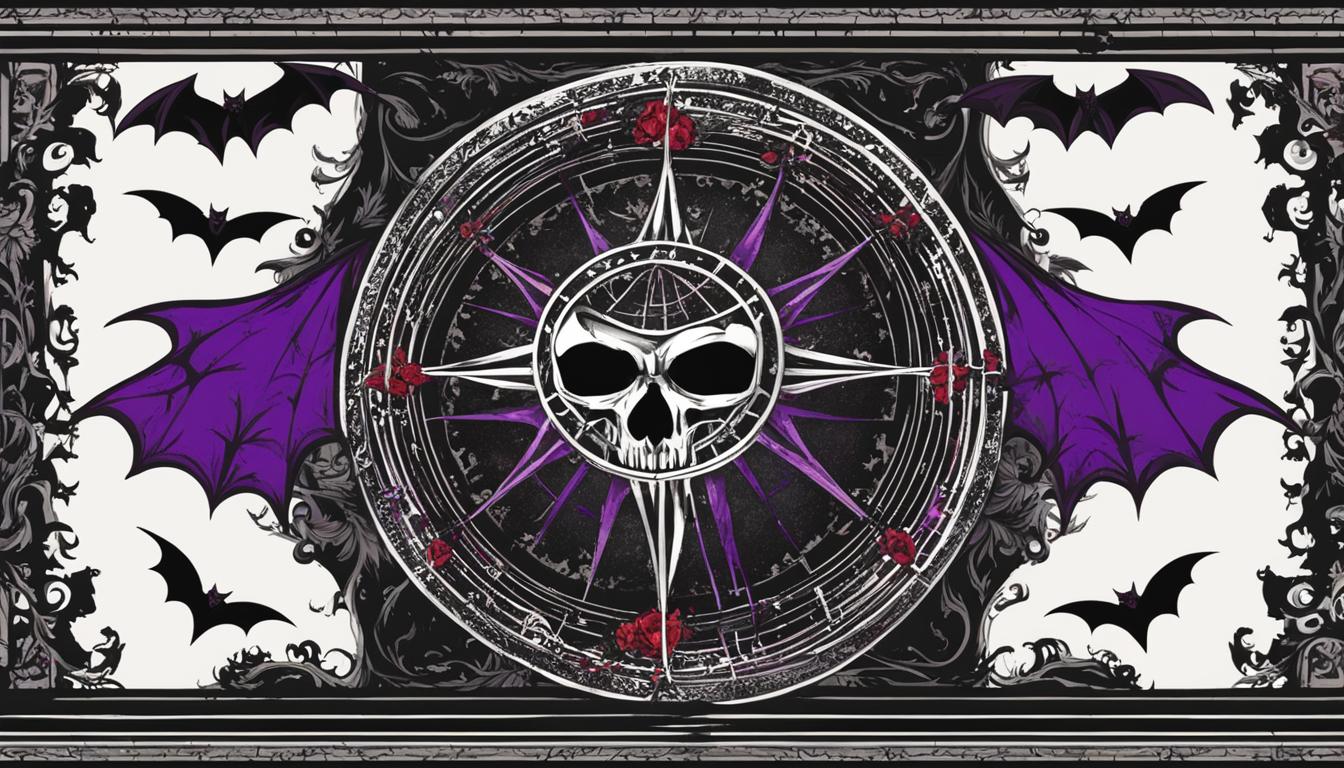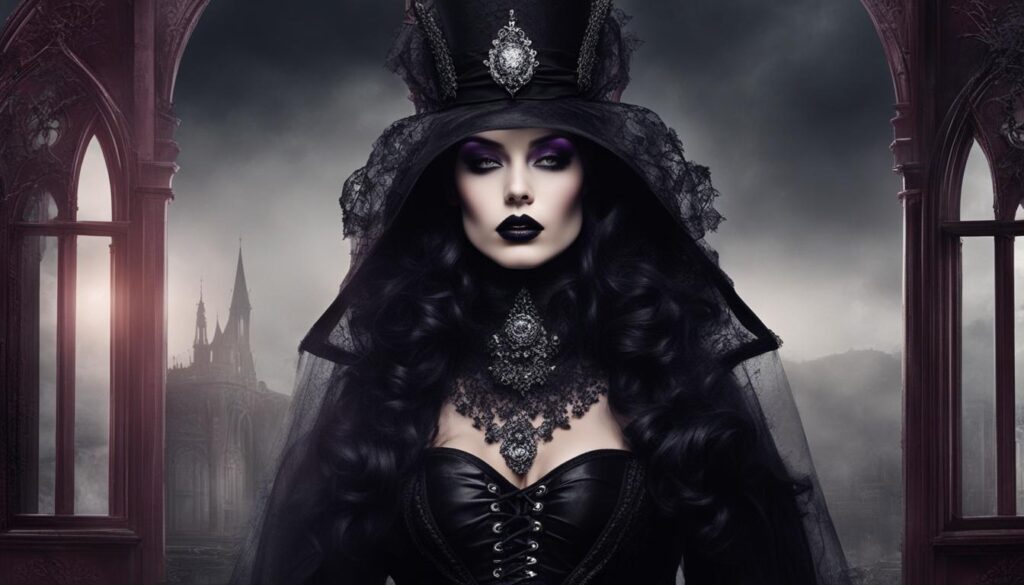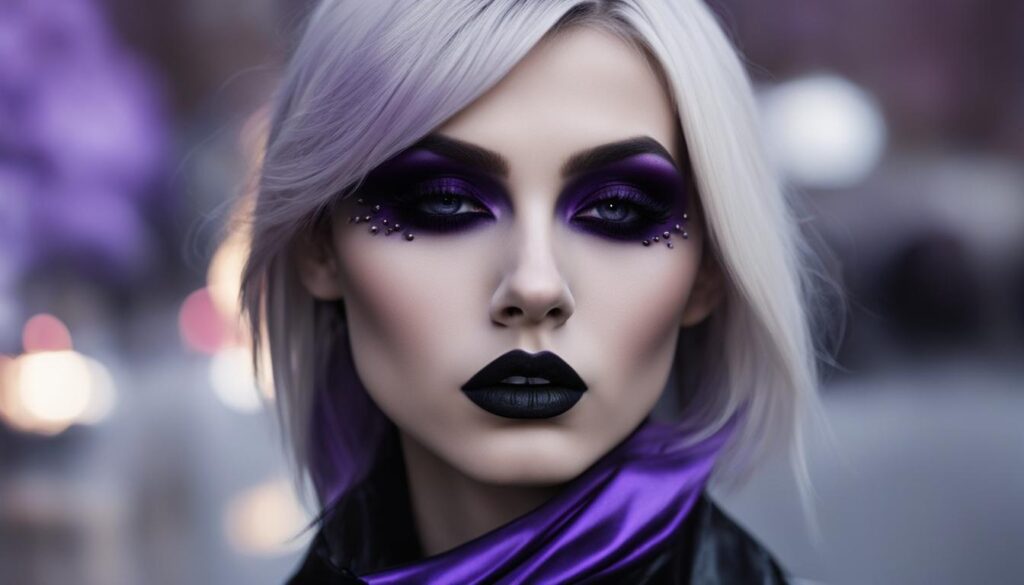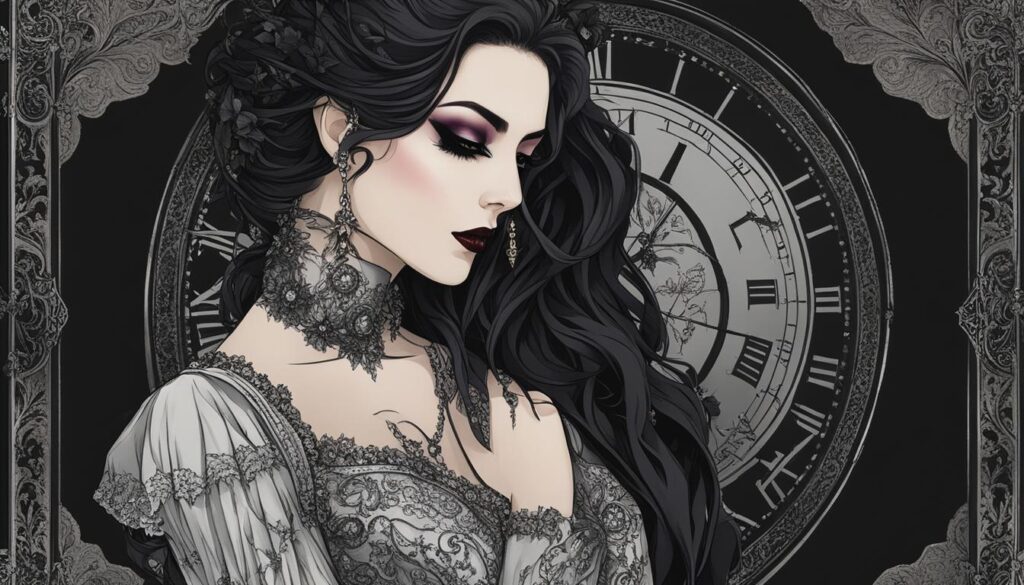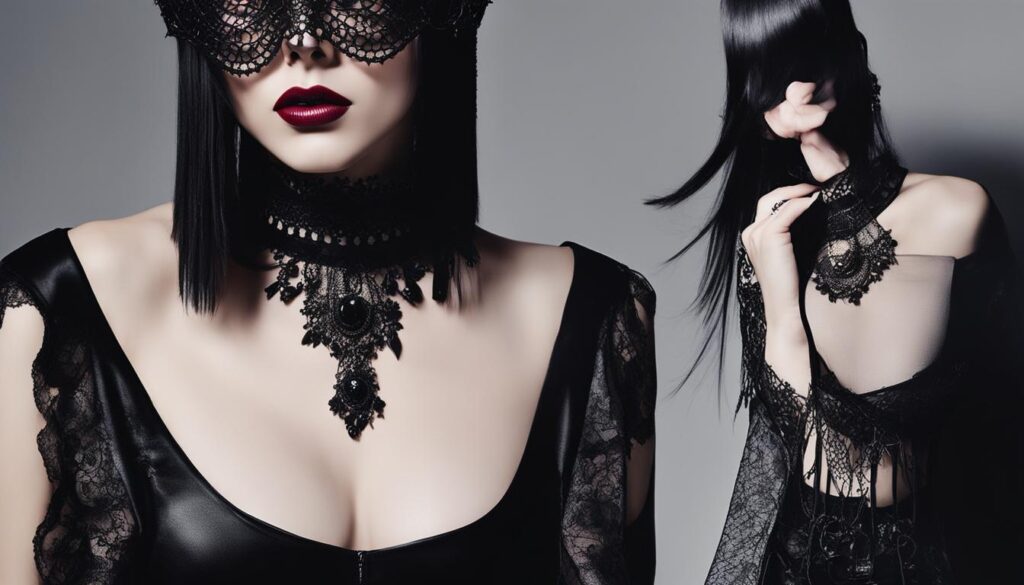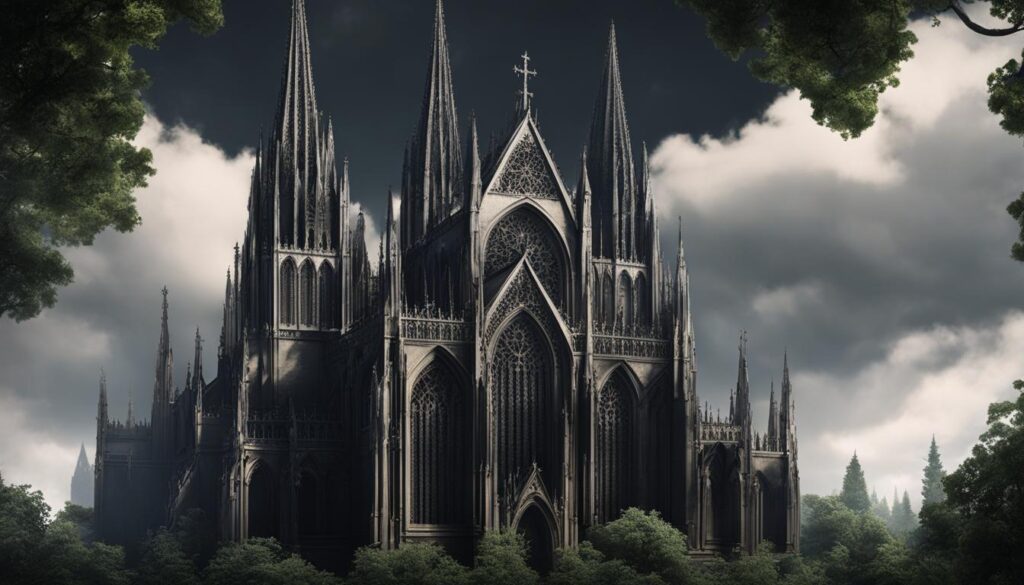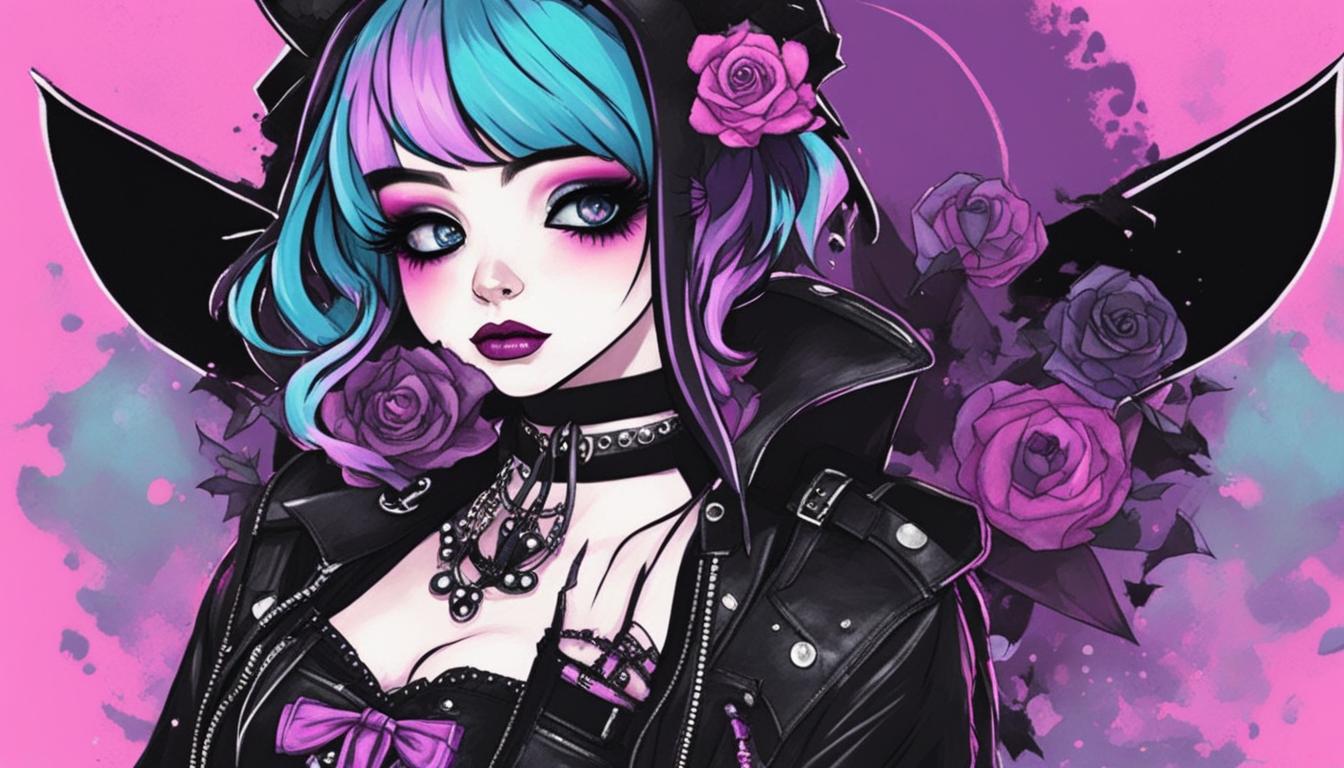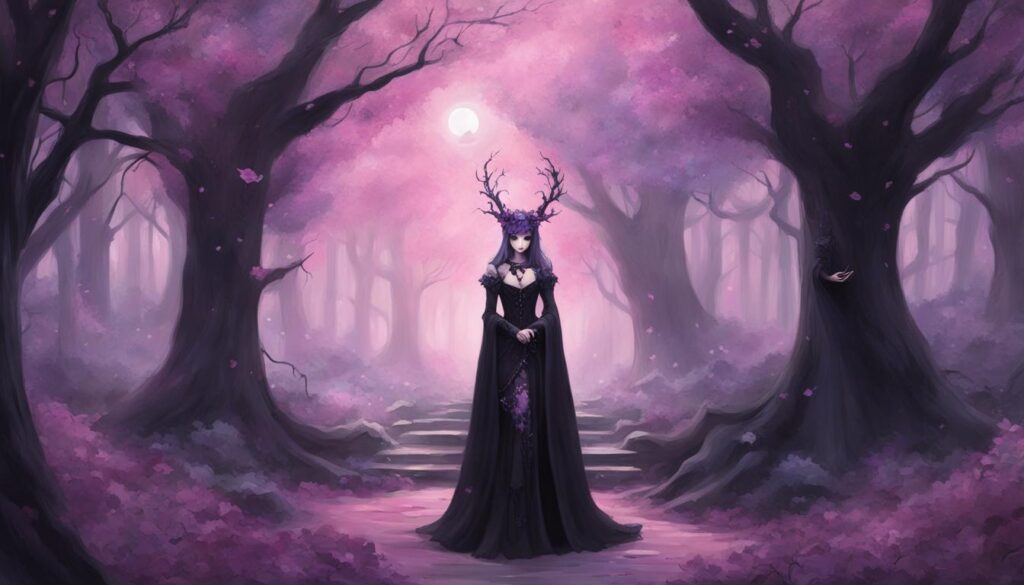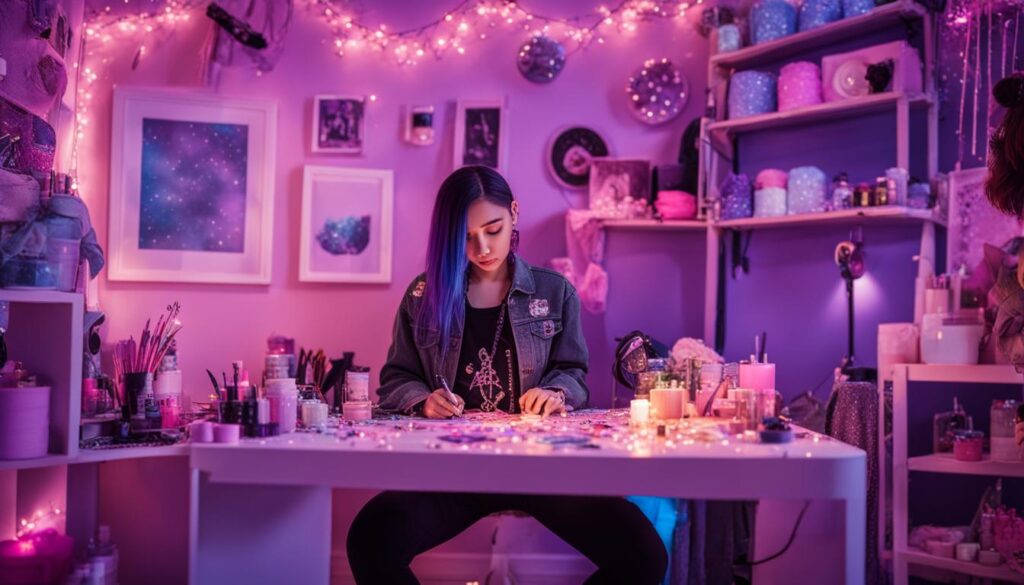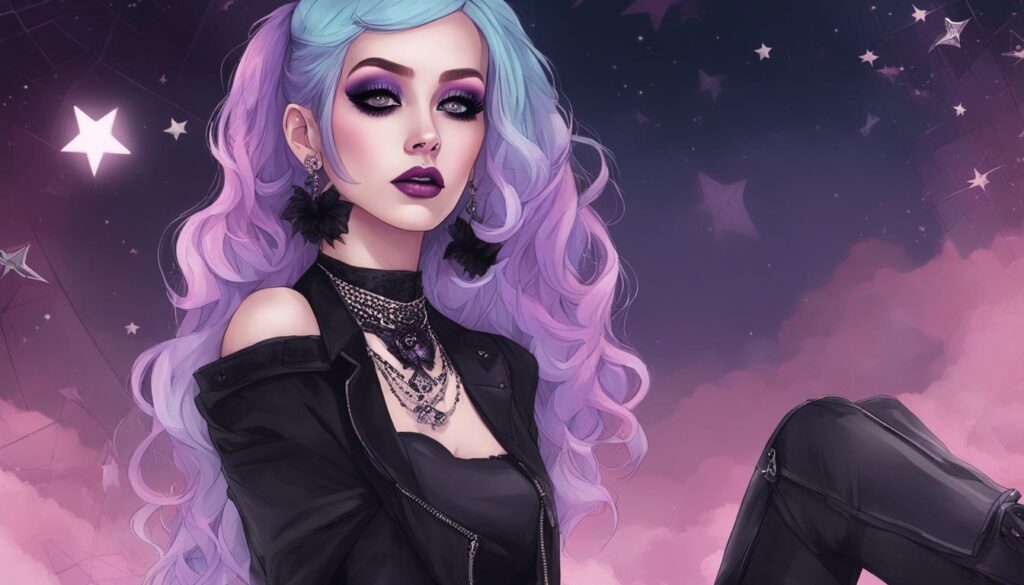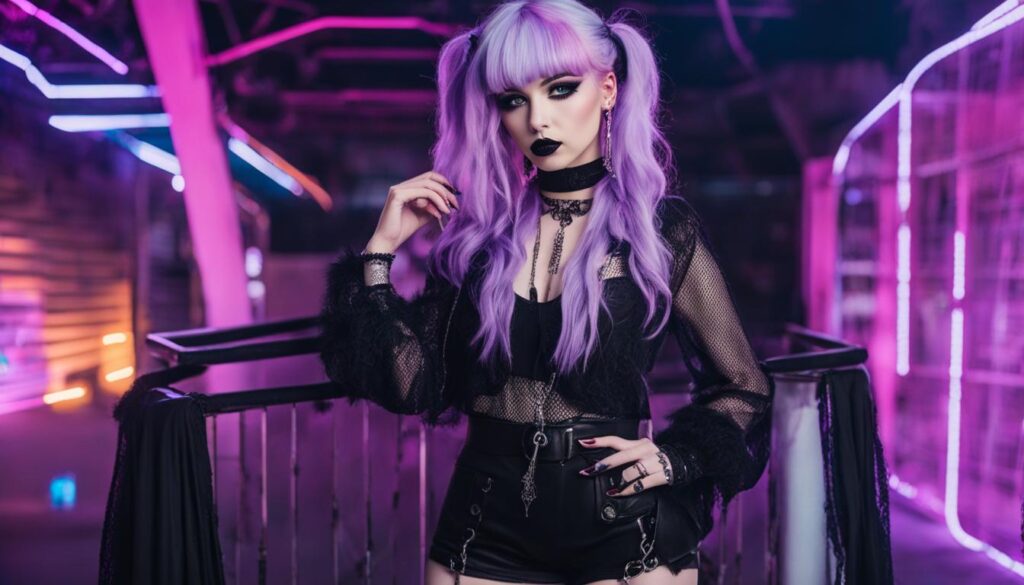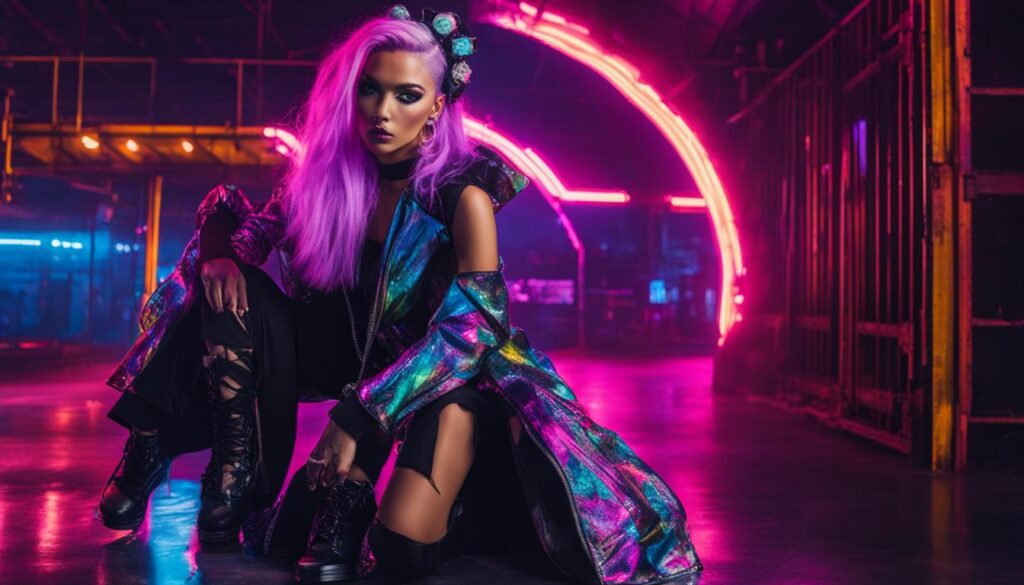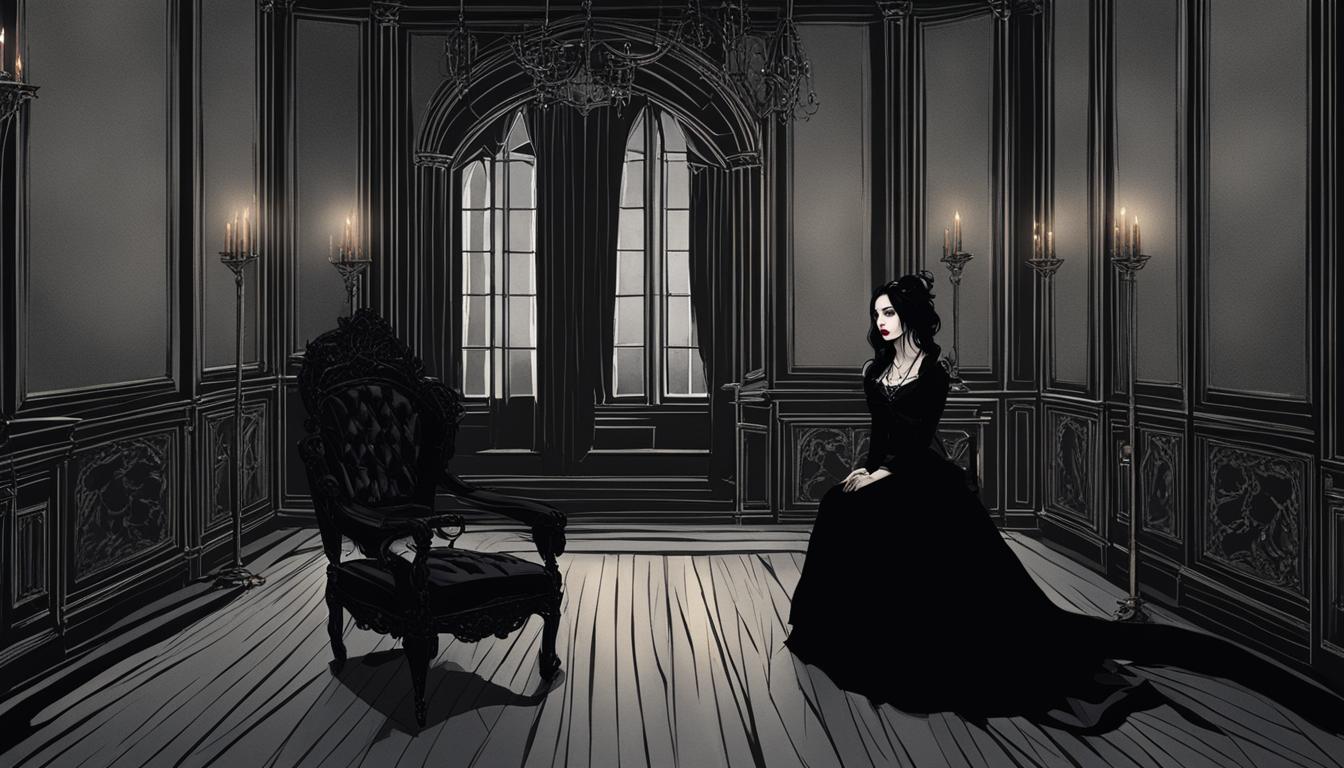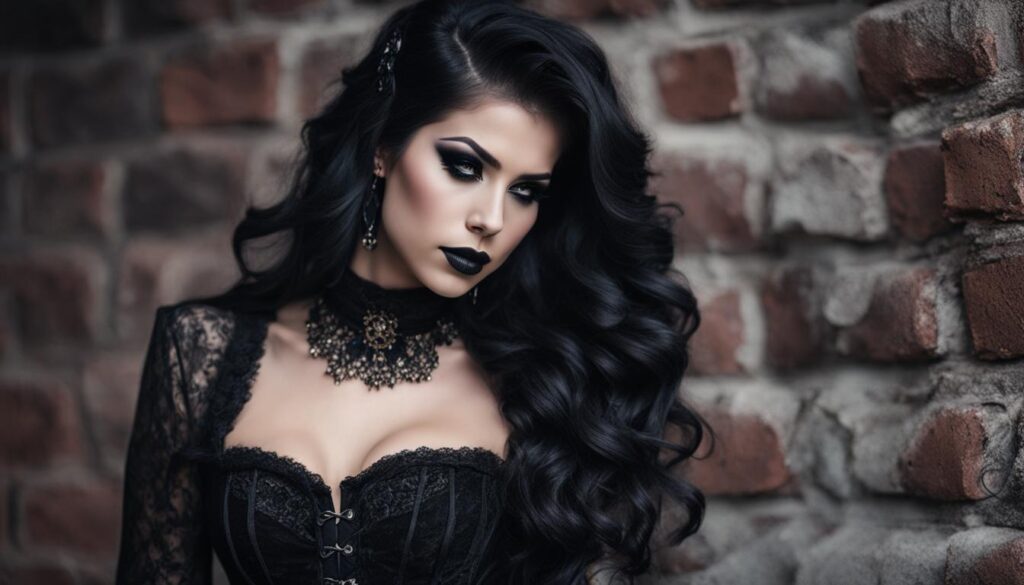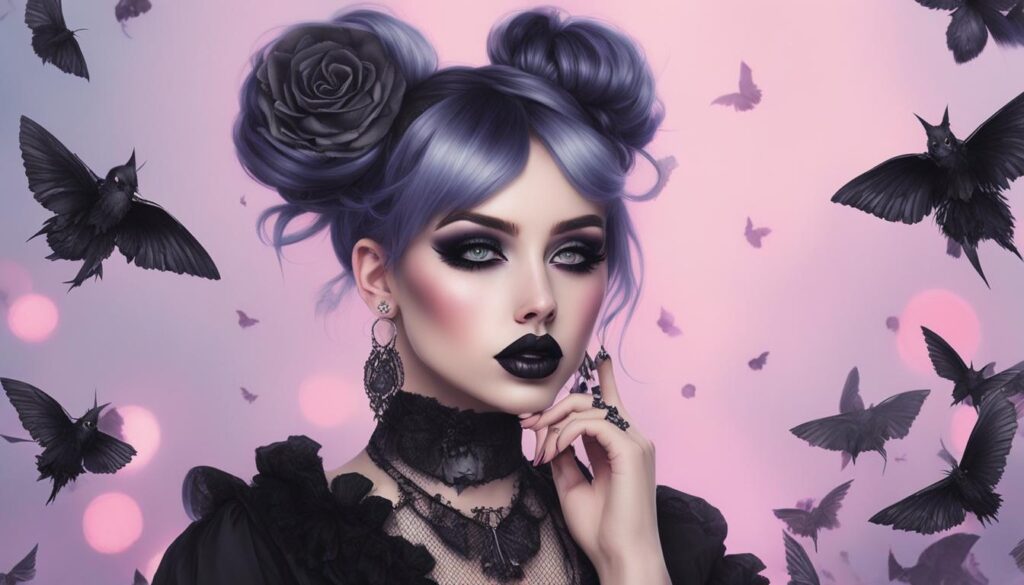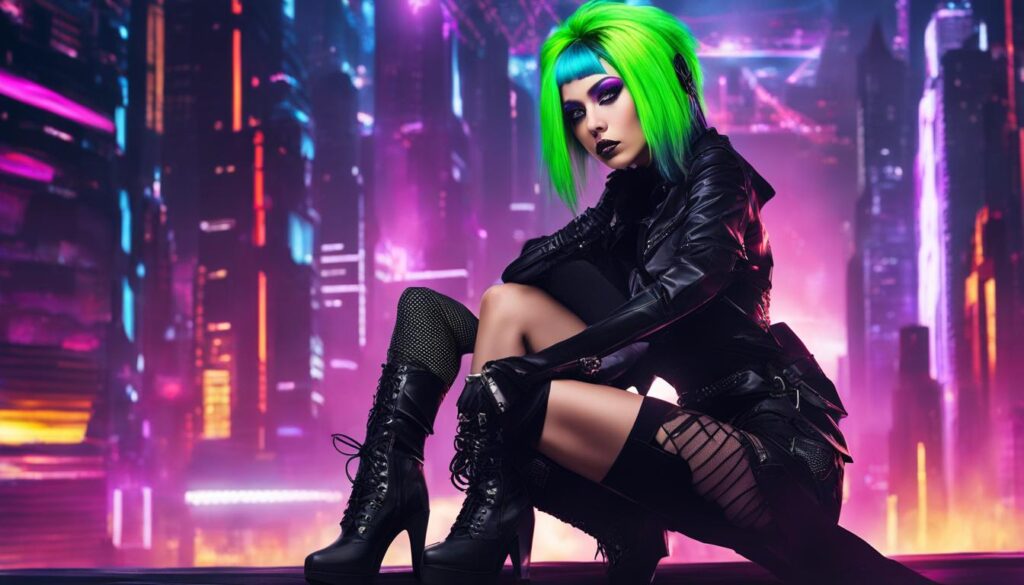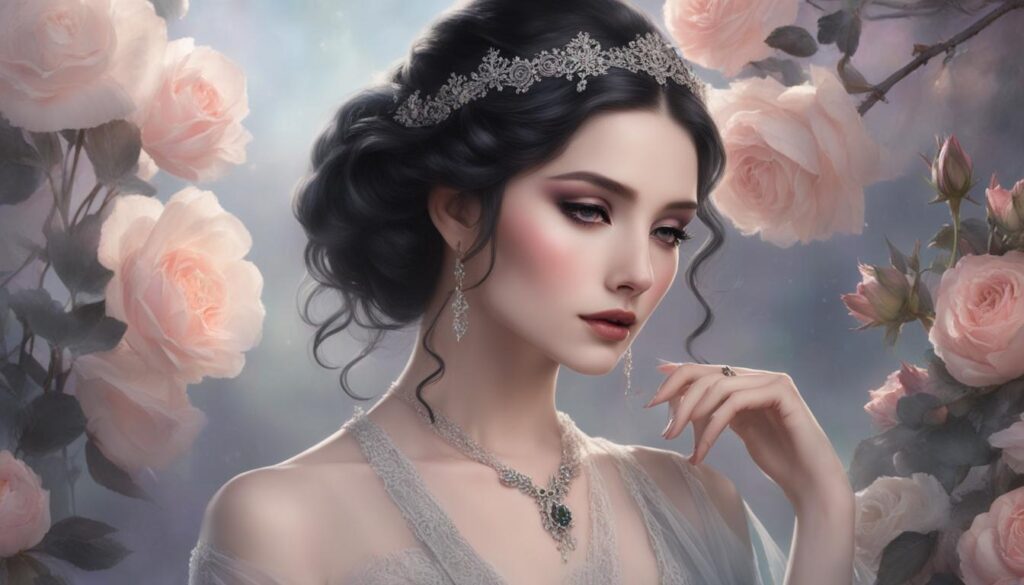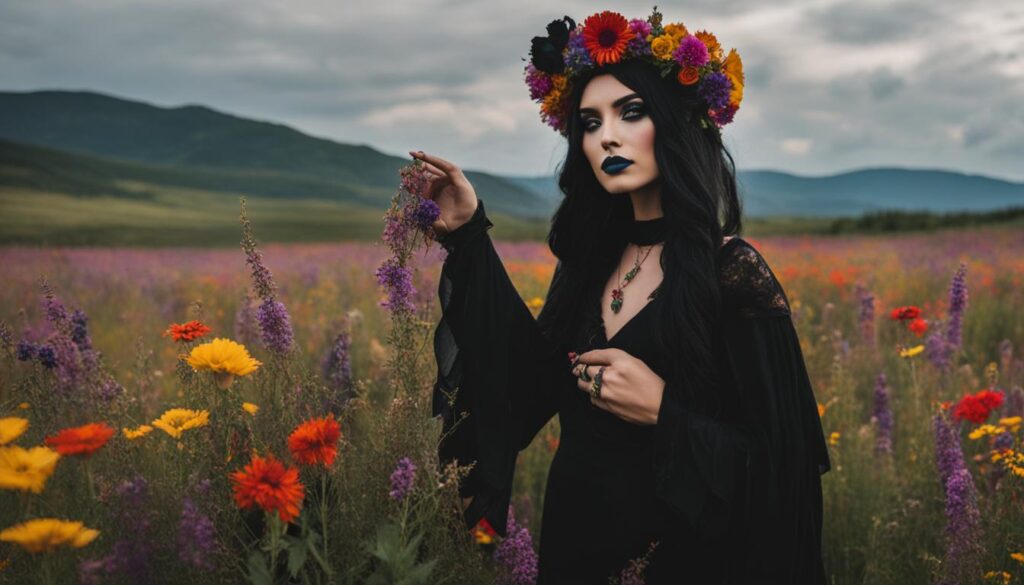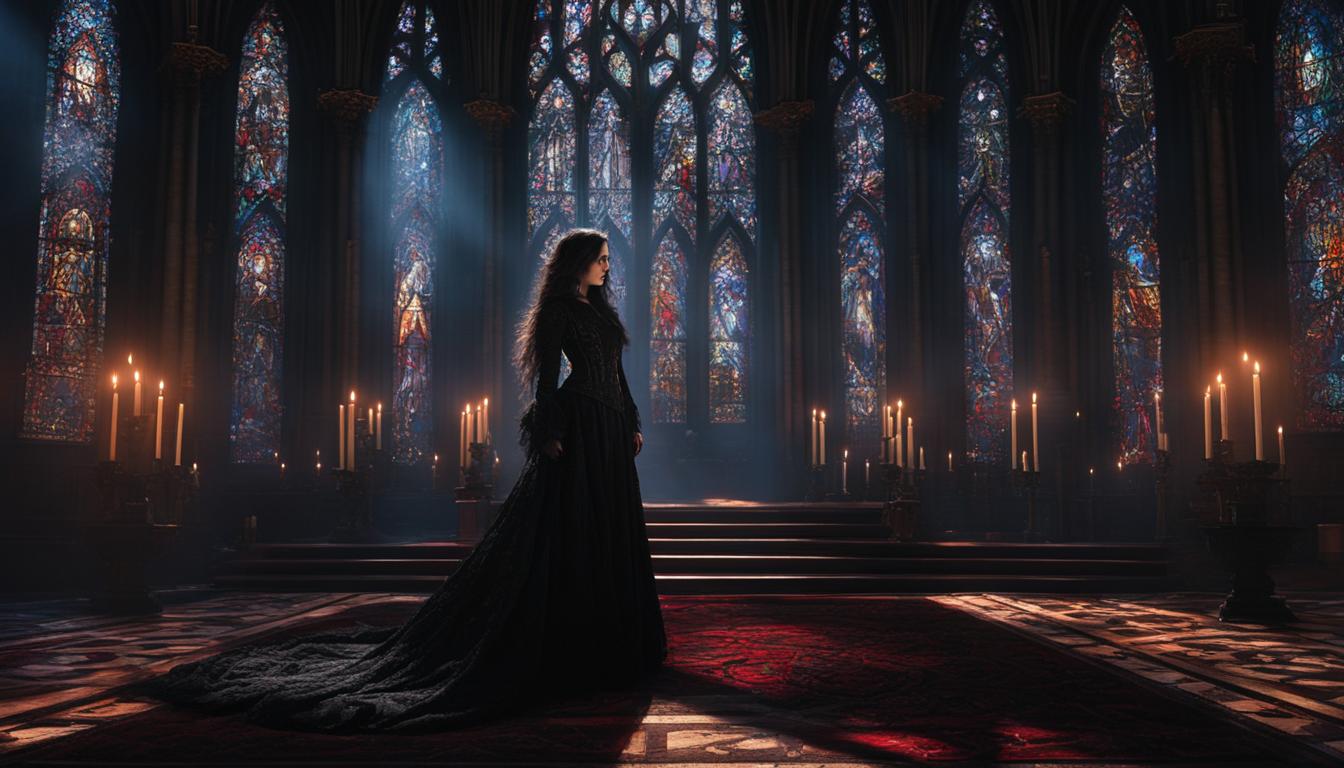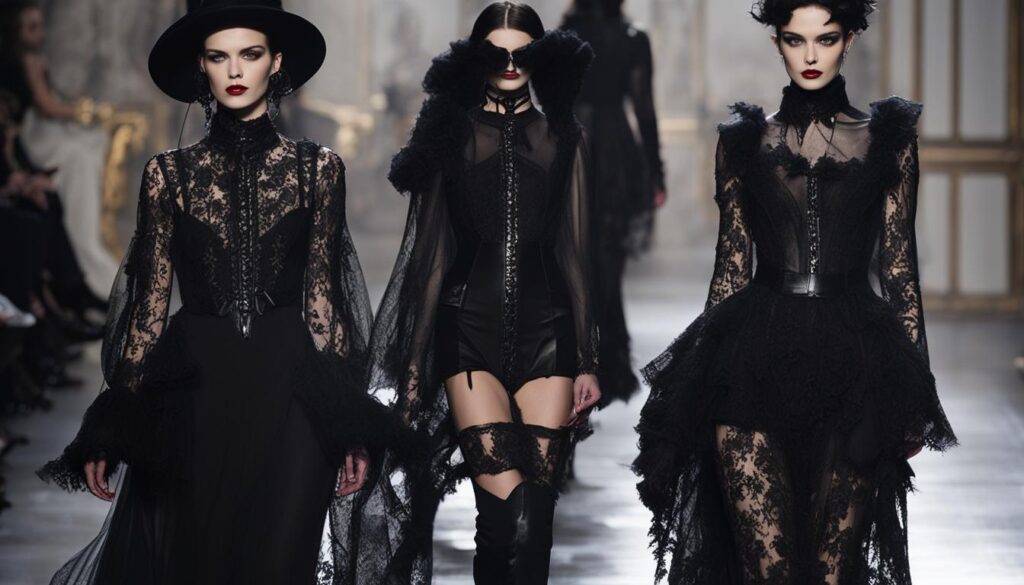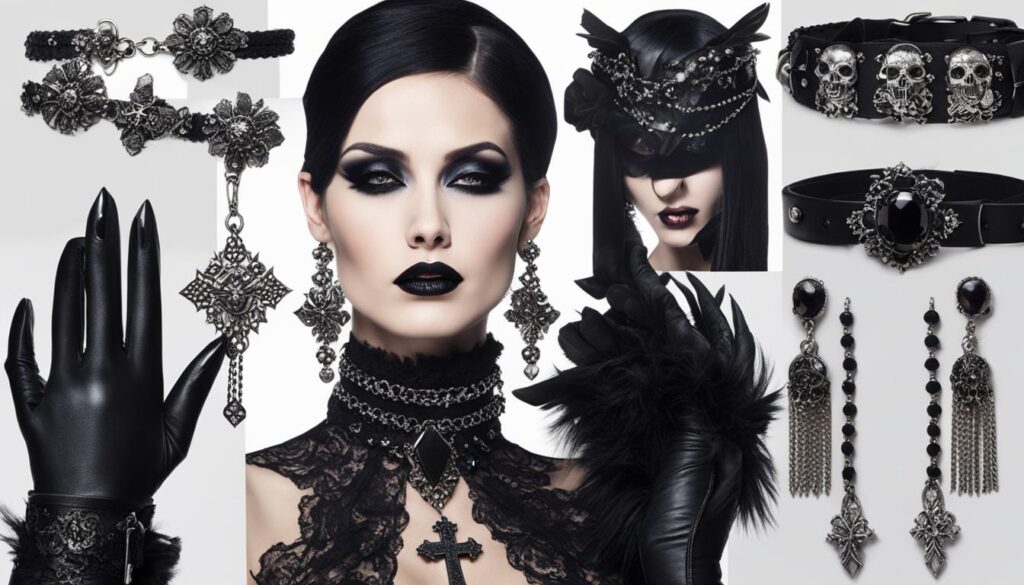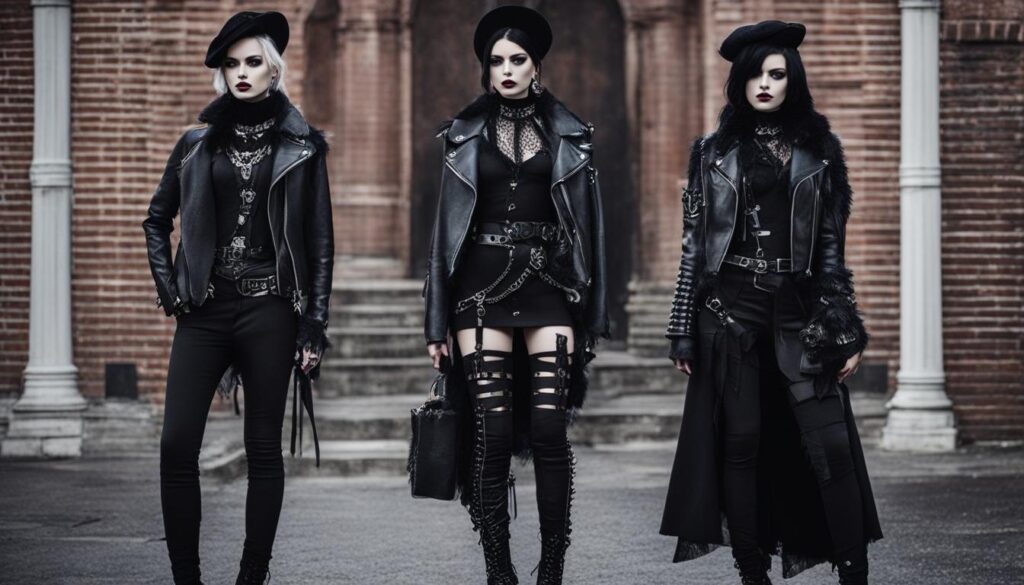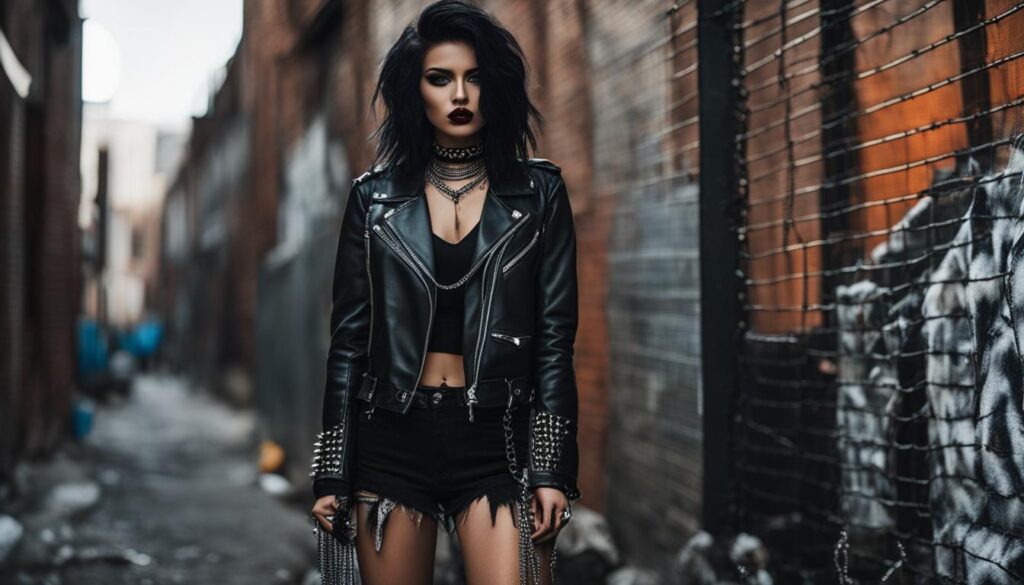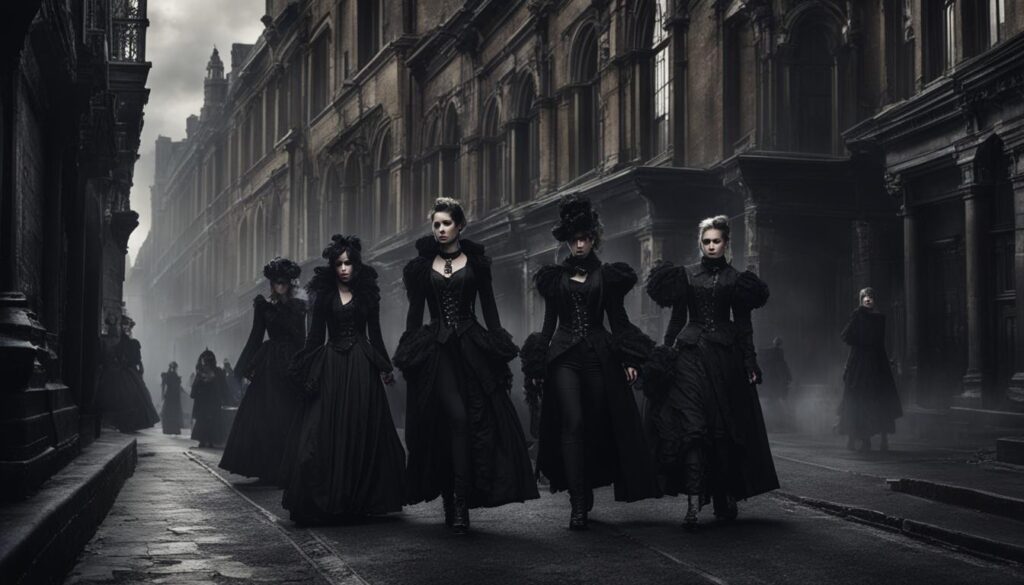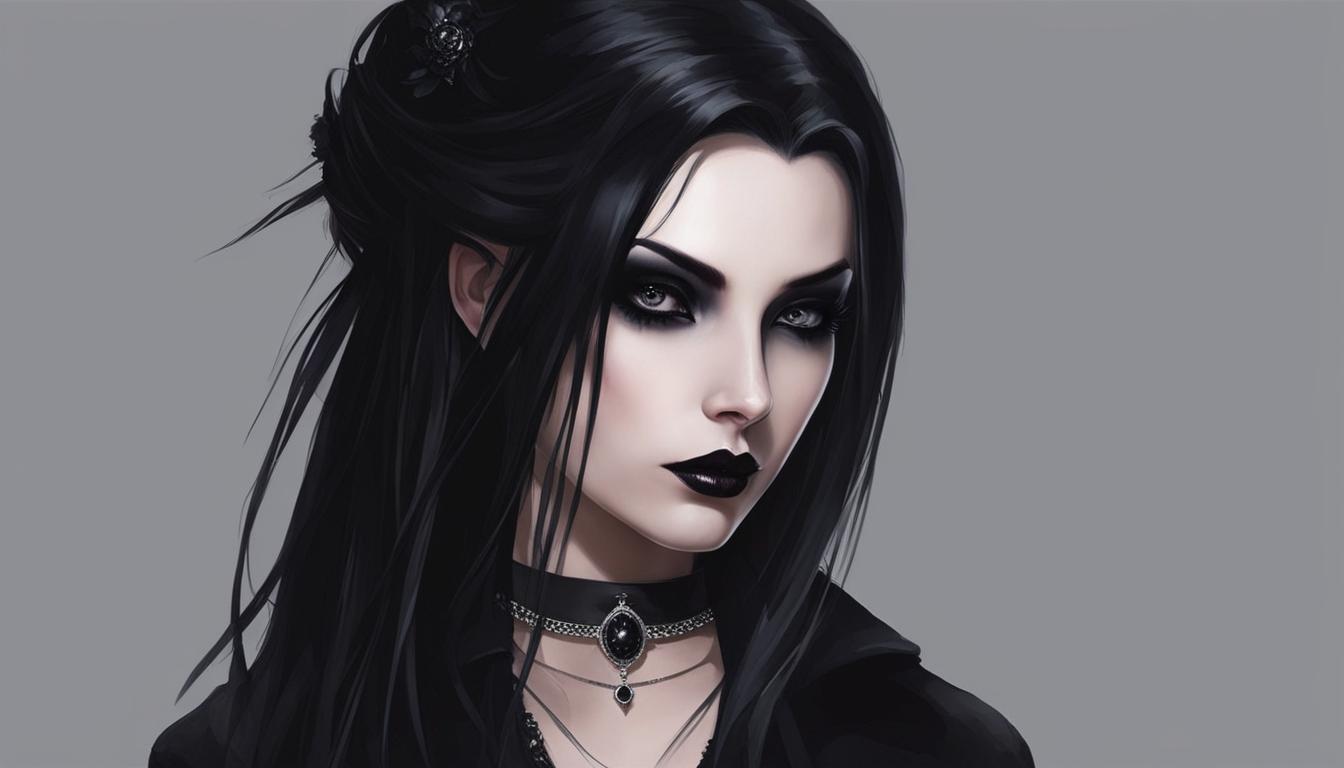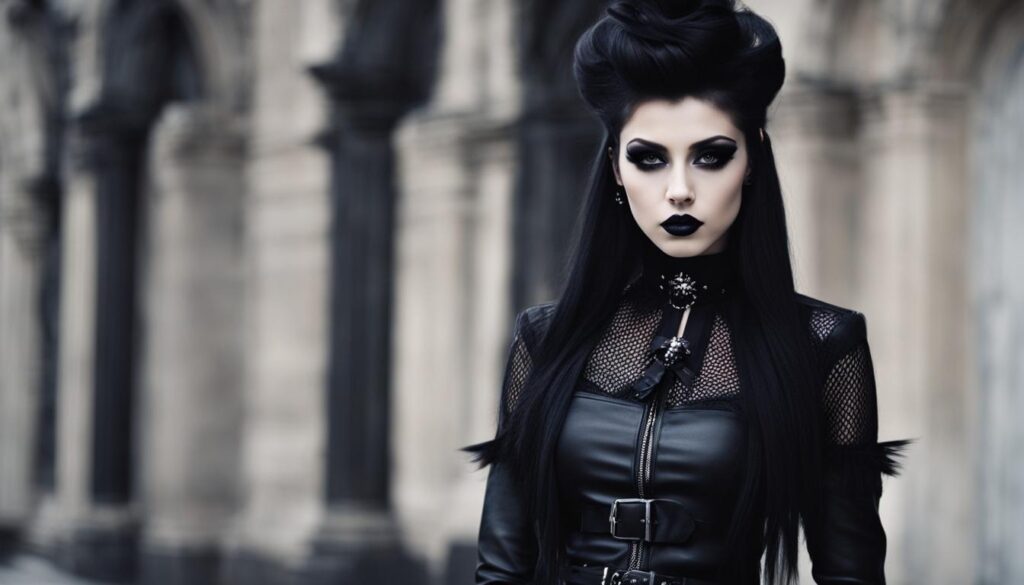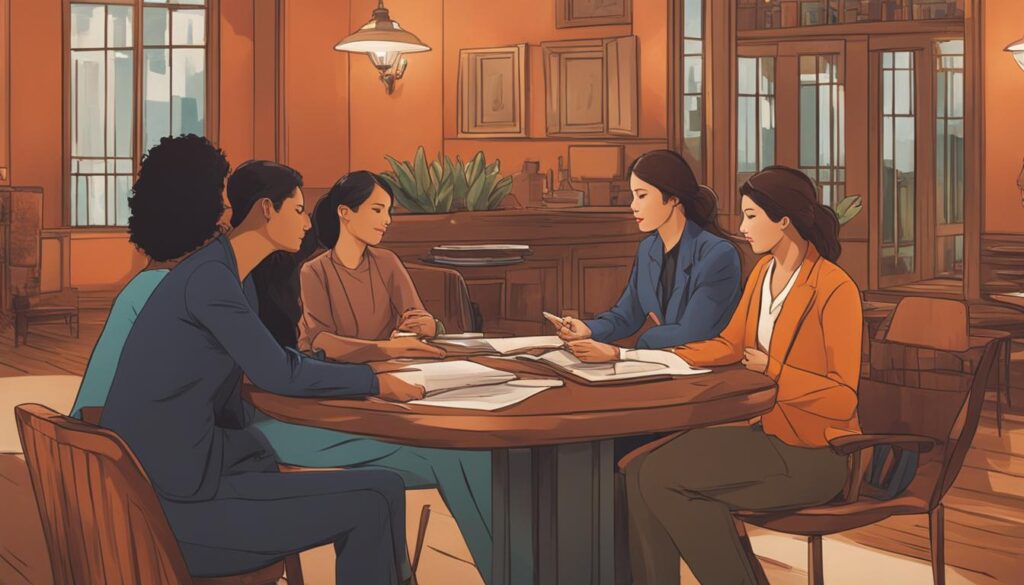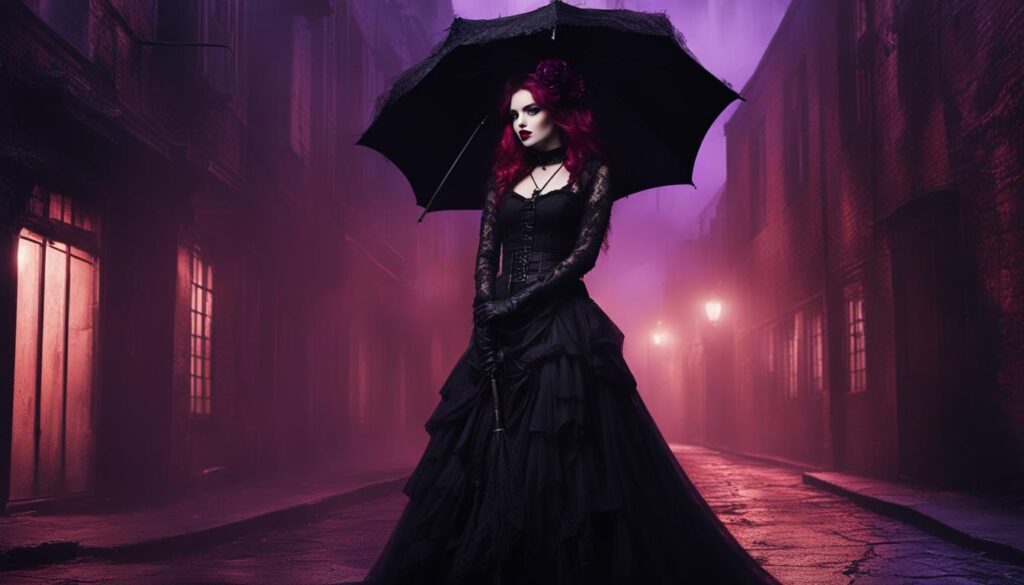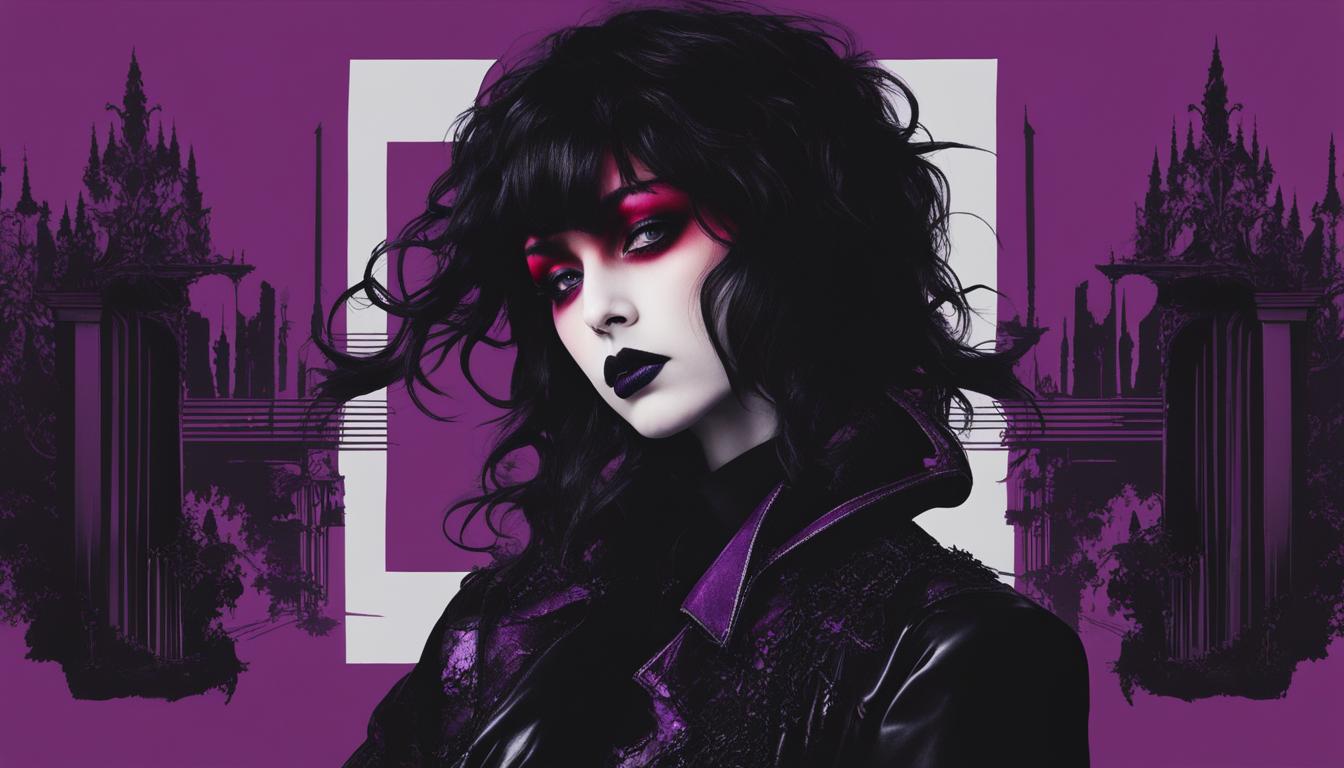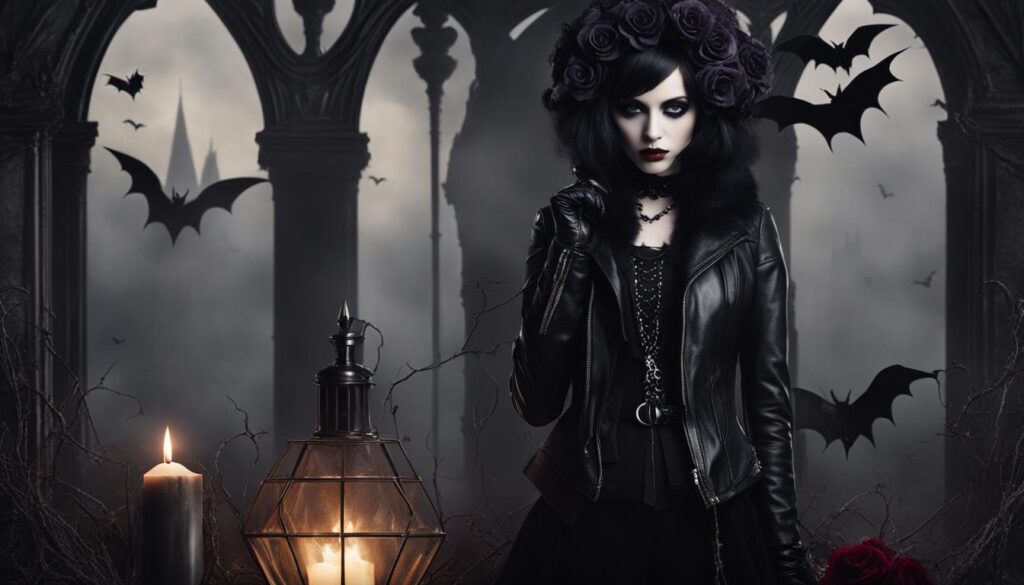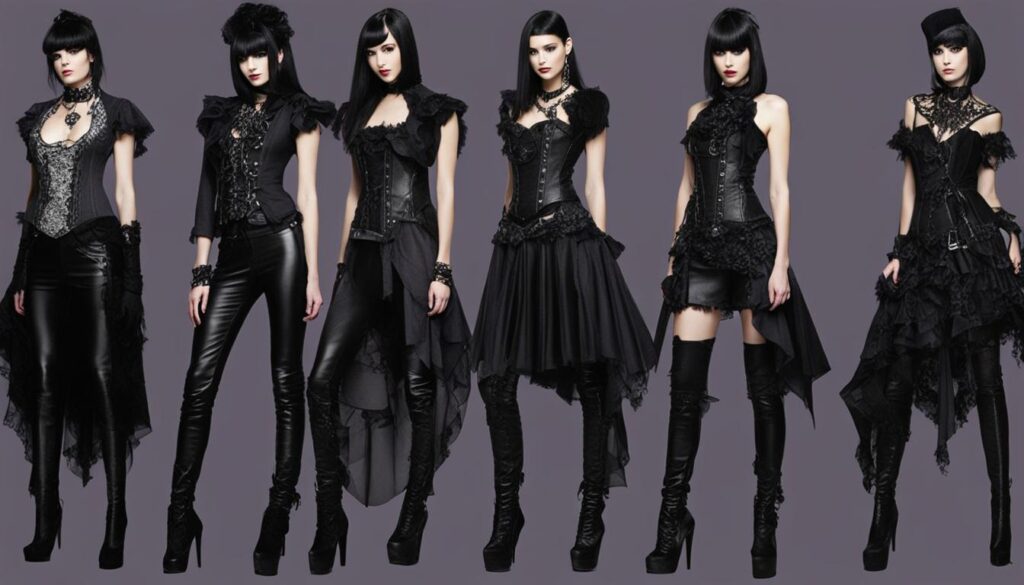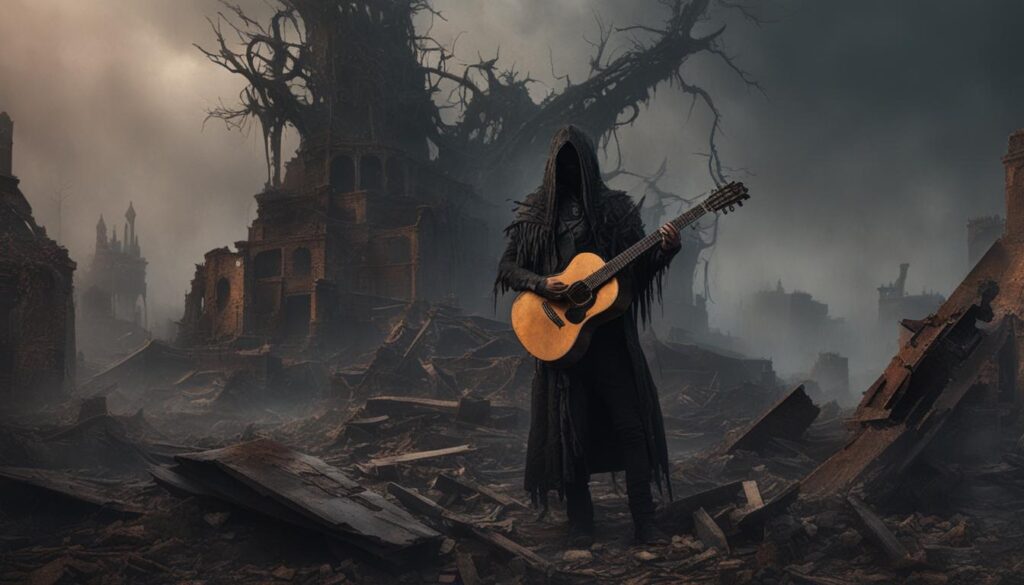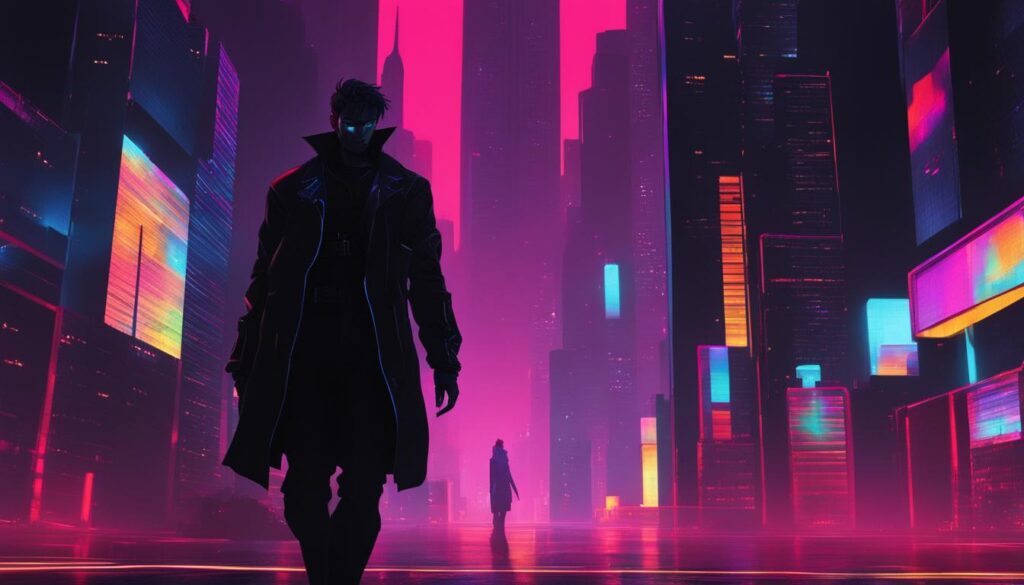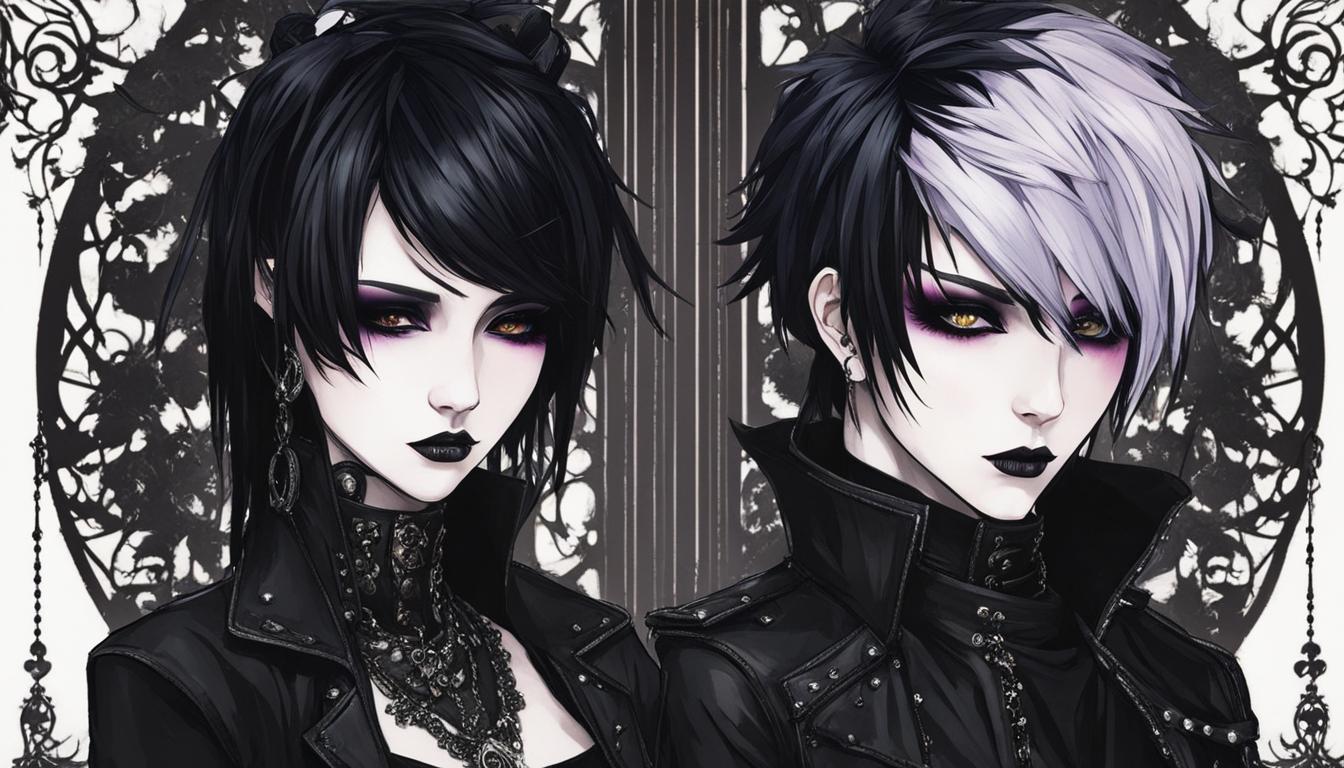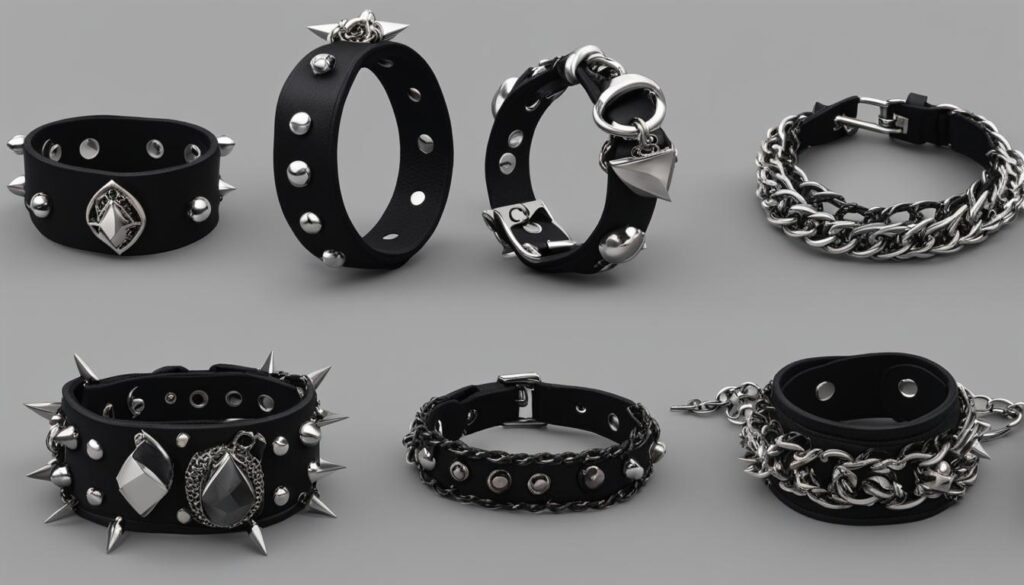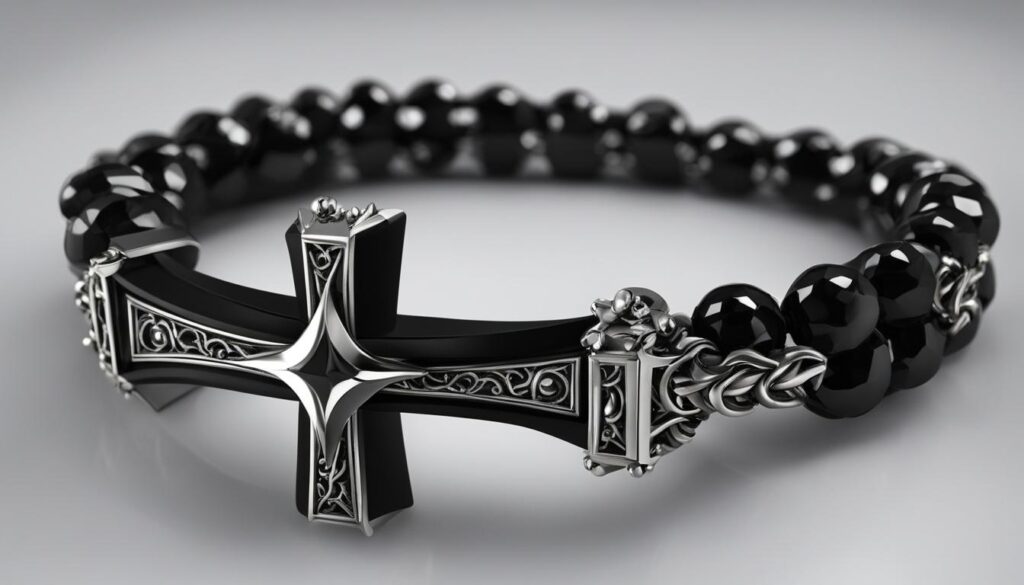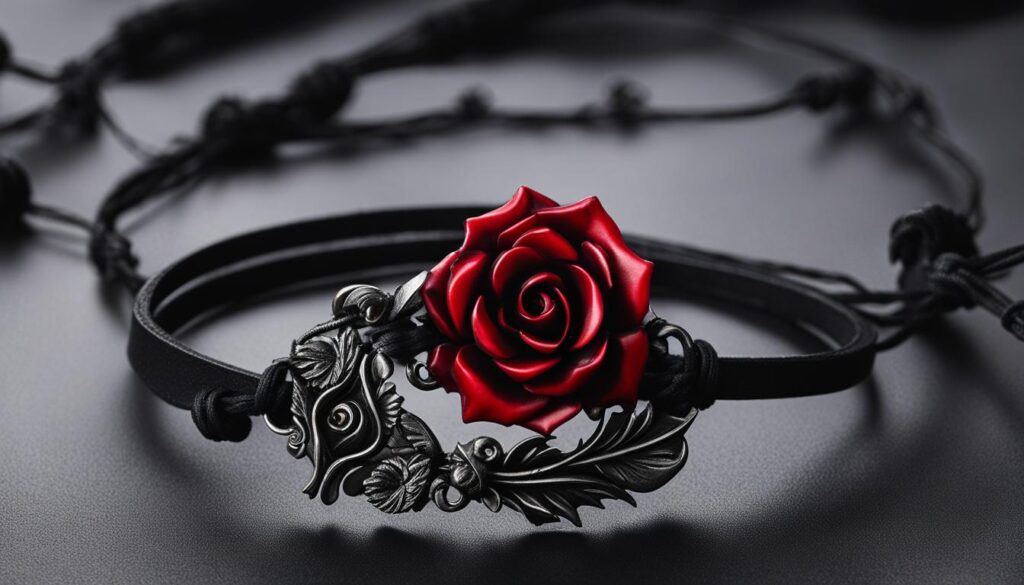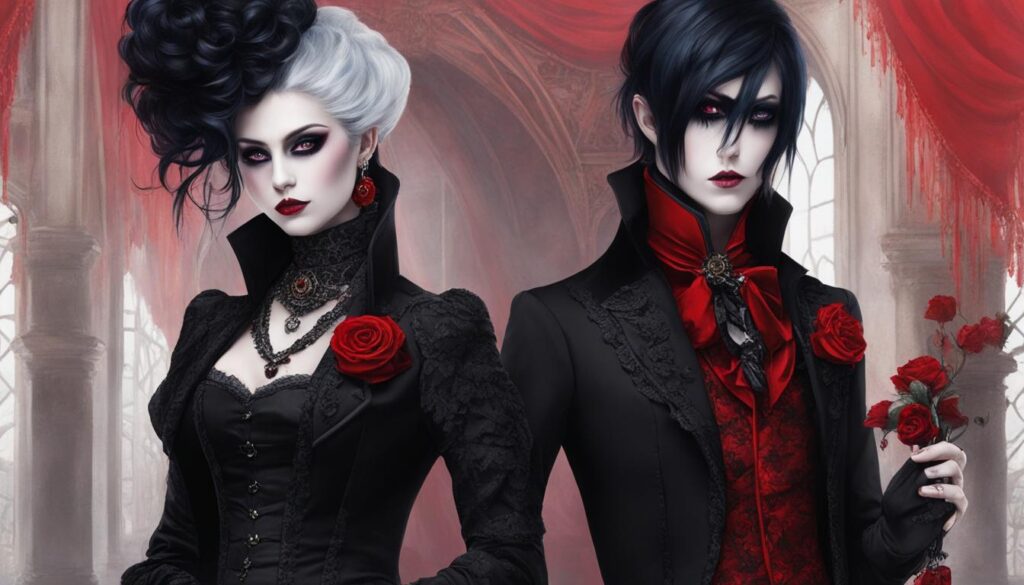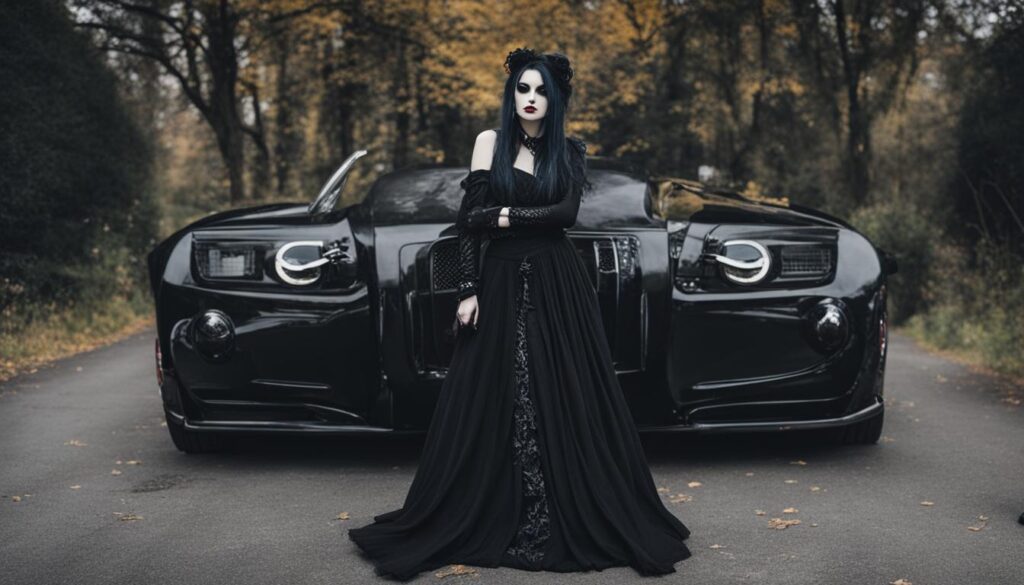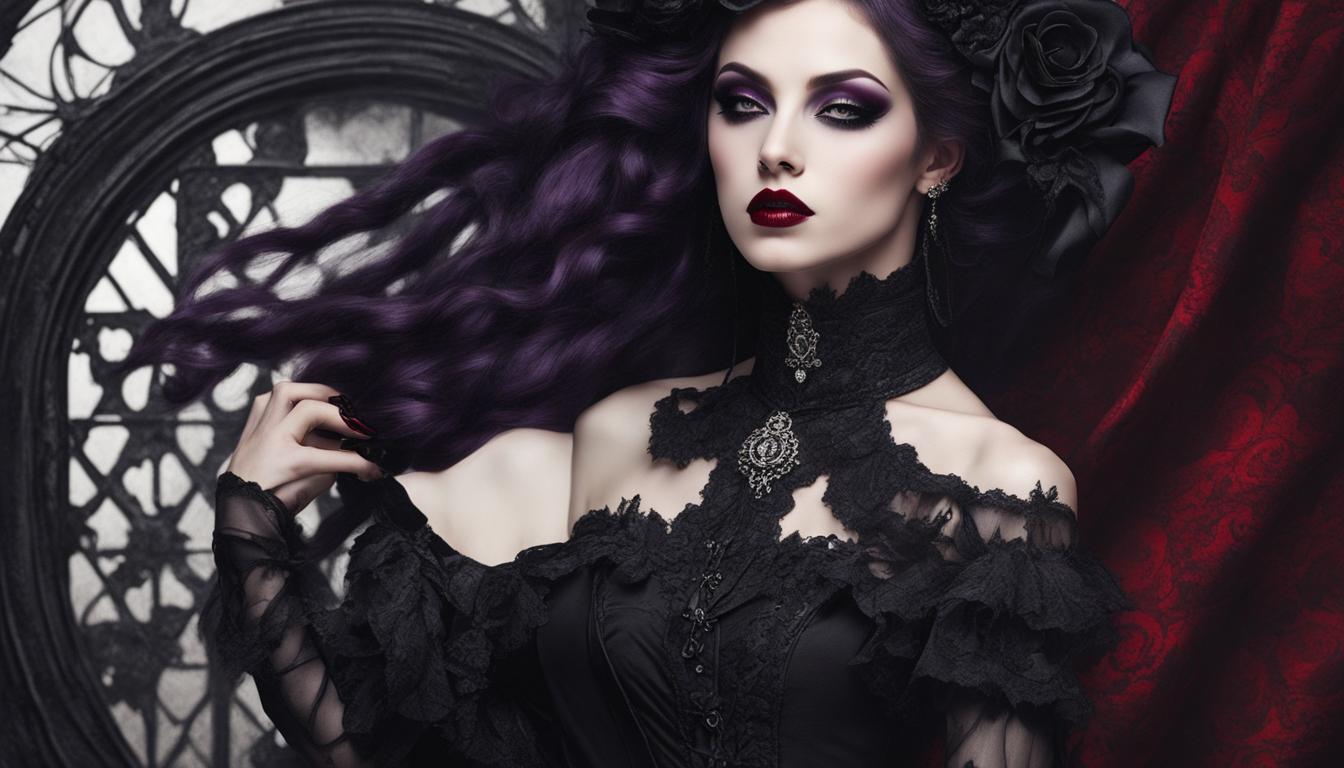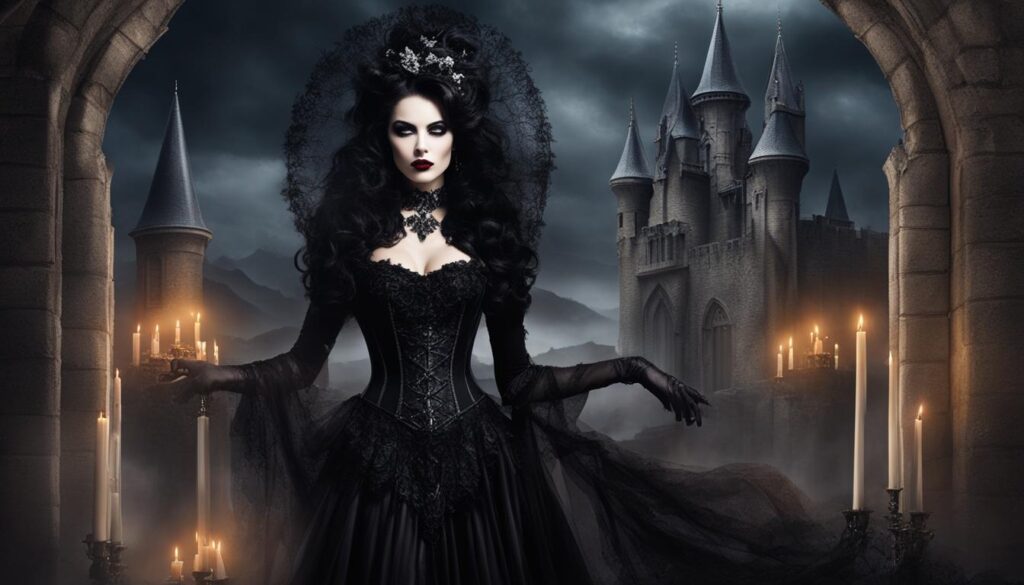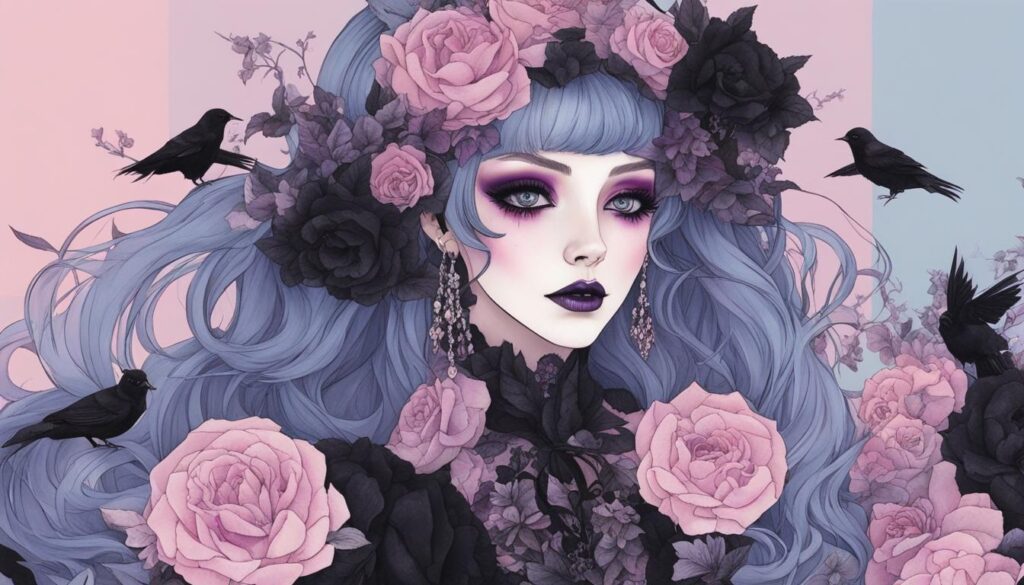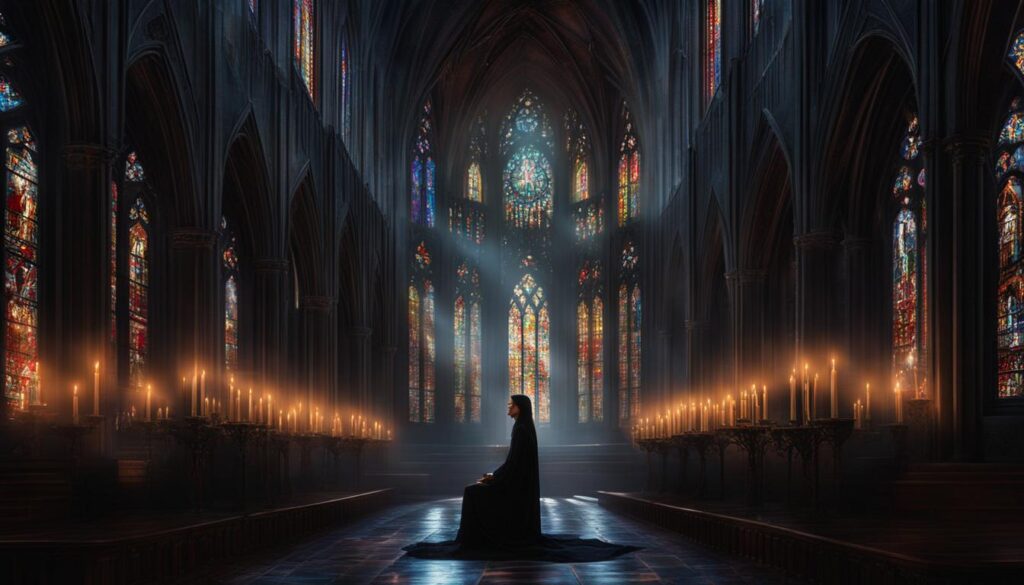Goth rock, a haunting subgenre of music that emerged in the early 1980s, holds an eerie allure that continues to captivate listeners today. Drawing inspiration from gothic fiction, horror movies, and other music styles like deathrock and darkwave, goth rock has carved its own unique space in the world of music. With its mysterious aesthetic and introspective themes, goth rock has garnered a dedicated following and left an indelible mark on alternative rock.
Join us as we delve into the origins of goth rock, explore its defining characteristics, and dive into the influential bands and albums that have shaped the genre. From the haunting sounds of Bauhaus and The Cure to the dark and introspective lyrics that define the genre, this article will take you on a journey through the captivating world of goth rock.
Key Takeaways:
- Goth rock emerged in the early 1980s as a subgenre influenced by gothic fiction and horror movies.
- The genre is characterized by its eerie, antiquated, and mysterious aesthetic.
- Influential goth rock bands include Bauhaus, The Cure, and Sisters of Mercy.
- Goth rock lyrics often explore dark and introspective themes like mortality and love.
- Goth rock fashion and aesthetics incorporate black, red, velvet, leather, and lace.
Goth Rock: Unveiling the Origins of the Gothic Style
Goth rock is more than just a style; it is a subculture that originated in the UK in the early 1980s. Inspired by gothic fiction and horror movies, goth rock drew from Victorian and Edwardian attire, incorporating elements like solid black ensembles, velvet, corsets, leather, lace, and gloves.
The gothic style also influenced other forms of art, providing a canvas for morbid, mystical, and romantic artwork. The goth rock subculture embraced the darkness, creating a unique aesthetic that resonated with individuals seeking an alternative to mainstream culture.
With its eerie allure and fascination with the macabre, goth rock quickly gained popularity and became a prominent movement within the music and fashion scenes. Bands like Bauhaus, Siouxsie and the Banshees, The Cure, and Sisters of Mercy emerged as pioneers of goth rock, setting the stage for the genre’s distinct sound and style.
The Gothic Subculture: A Haven for the Mysterious and Romantic
In addition to its impact on fashion and art, the gothic subculture provided a haven for individuals seeking a sense of belonging and connection. Goths embraced their individuality, finding solace in the mysterious and romantic aspects of goth rock.
The gothic subculture became a refuge for those who felt like outsiders in mainstream society. It allowed individuals to express themselves authentically and explore the depths of their emotions and imagination.
As the goth rock movement grew, it influenced not only music but also popular culture, leaving an indelible mark that can still be felt today. The gothic subculture continues to evolve, with contemporary goth rock bands carrying on the legacy and creating new and innovative music.
Traditional Goth Fashion
Traditional goth fashion, a defining element of the gothic subculture, emerged in the early 1980s and remains relevant today. This unique style draws inspiration from punk and glam rock scenes, with a darker twist. It is characterized by edgy attire, smoky eye makeup, and an overall eerie aesthetic.
In terms of attire, traditional goth fashion embraces a rebellious and alternative look. Leather pants, fishnet stockings, metal belts, and leather boots are staples of this style. The color black dominates traditional goth fashion, symbolizing mystery and darkness. It is often combined with dramatic accessories such as spikes, chains, and antique-style jewelry.
Elements of Traditional Goth Fashion:
- Smoky eye makeup
- Black lipstick
- Leather pants
- Fishnet stockings
- Metal belts
- Leather boots
Over the years, traditional goth fashion has experienced a comeback, with influences from modern goth icons like Kim Kardashian and Megan Cox. This resurgence has brought new life to the style, incorporating elements of modern fashion while staying true to its roots. Dark makeup, black dresses, lush velvet, and lace are all part of the gothic trend in 2022.
Traditional goth fashion is not just a style; it is a form of self-expression that embraces individuality and the darker side of fashion. Whether you fully immerse yourself in the gothic subculture or draw inspiration from its aesthetic, embracing traditional goth fashion allows you to tap into a mesmerizing world of mystery and allure.
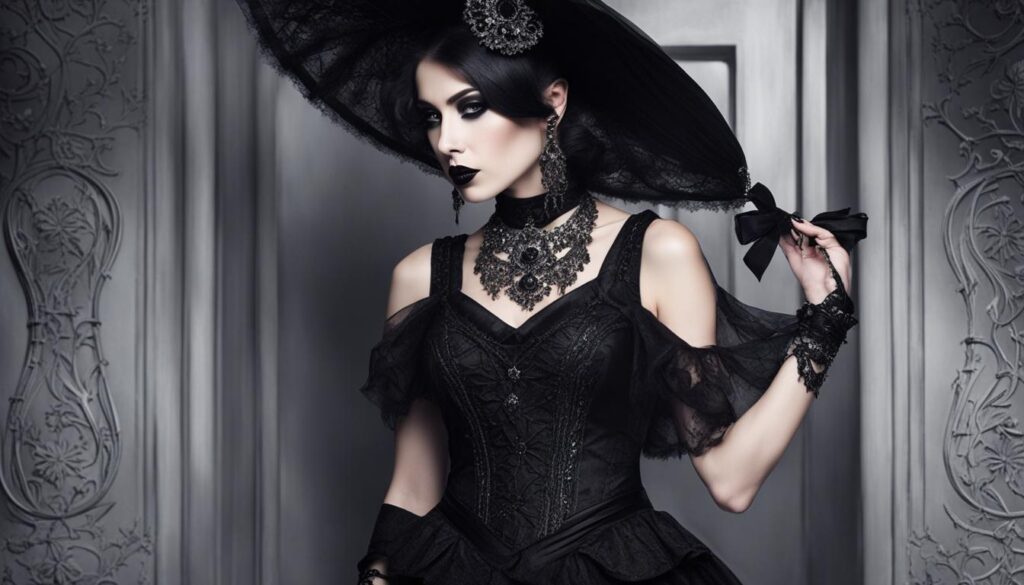
Victorian Goth Fashion
One of the subcategories of gothic fashion that emerged in the early 1980s is Victorian goth fashion. Inspired by the literature of the Victorian era, this style combines elements of romance and mystery, creating a truly captivating aesthetic.
Victorian goth fashion embraces the elegance and darkness associated with the gothic subculture. Veils, corsets, and flowy dresses in shades of orange, red, purple, and black are characteristic of this style. Accessories such as gloves, fishnet stockings, and crowns complete the Victorian goth look, adding an extra touch of sophistication.
The Victorian goth fashion trend continues to inspire and influence modern gothic styles. Its timeless appeal and attention to detail make it a favorite among those who seek to embrace the dark and mysterious side of fashion.
The Influence of Gothic Fashion in Music
Gothic fashion not only influenced the way people dress but also became a source of inspiration for musicians. Goth rock bands incorporated the gothic aesthetic into their performances and album artwork. The fashion and music of the gothic subculture became intertwined, creating a unique and captivating atmosphere that still resonates today.
When it comes to goth rock music, the visual aspect plays a crucial role. The dark and mysterious fashion choices of gothic culture are often mirrored in the haunting melodies and introspective lyrics of goth rock. From the brooding vocals to the melancholic guitar riffs, goth rock music creates an atmosphere that reflects the mystery and allure of gothic fashion.
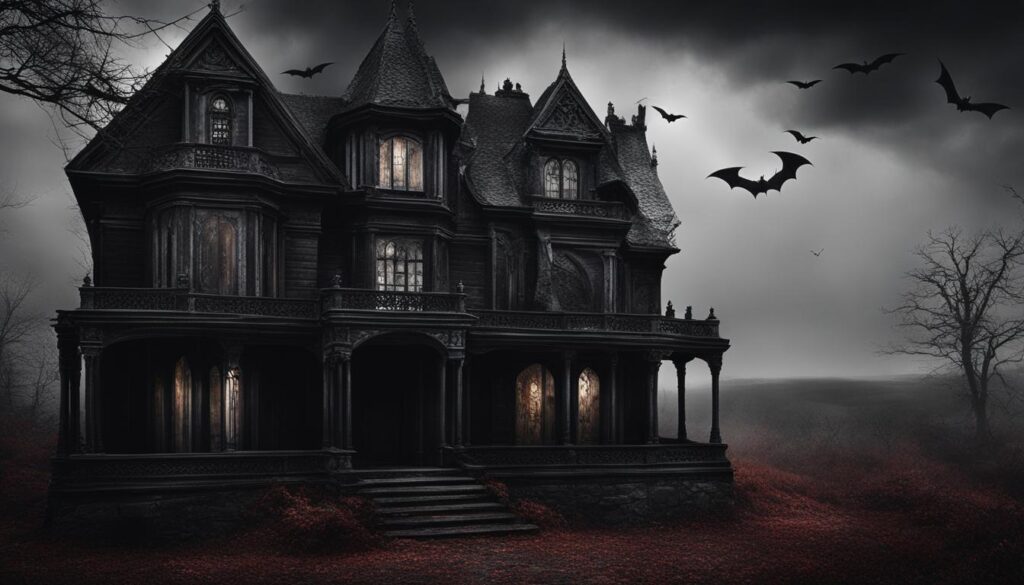
The gothic fashion aesthetic is not only seen on stage but also in album covers and promotional materials. Bands like Bauhaus and Siouxsie and the Banshees used striking imagery and dark visuals to convey the essence of their music. This combination of fashion and music creates a powerful and immersive experience for fans of goth rock.
The Impact of Gothic Fashion on the Goth Rock Genre
Gothic fashion has had a profound impact on the goth rock genre. The visual aspect of the gothic subculture has helped shape the identity of goth rock bands and their music. The dark and enigmatic fashion choices have become synonymous with the genre, creating a sense of unity among goth rock fans. The influence of gothic fashion in music extends beyond aesthetics, with the fashion choices often reflecting the themes and emotions explored in goth rock lyrics.
Goth Rock Bands and Influential Albums
Goth rock has been shaped by several influential bands and their iconic albums. These pioneers of the genre have left a lasting impact on the goth rock scene, establishing the sound and aesthetic that define it today.
One of the most prominent bands in goth rock history is Bauhaus. Their debut single, “Bela Lugosi’s Dead,” released in 1979, is often considered the birth of goth rock. With its haunting vocals and atmospheric instrumentation, the song set the tone for the genre’s dark and brooding sound.
Siouxsie and the Banshees are another influential goth rock band. Known for their atmospheric and ethereal music, they pushed the boundaries of the genre with albums like “Juju” and “A Kiss in the Dreamhouse.” Their unique blend of post-punk and goth aesthetics earned them a dedicated following and solidified their place in goth rock history.
The Cure is also a cornerstone of the goth rock genre. Their album “Disintegration,” released in 1989, is considered a masterpiece and a defining moment for the genre. With its introspective lyrics and lush, atmospheric soundscapes, “Disintegration” remains a goth rock classic.
Influential Goth Rock Albums:
- “Bela Lugosi’s Dead” by Bauhaus
- “Juju” and “A Kiss in the Dreamhouse” by Siouxsie and the Banshees
- “Disintegration” by The Cure
- [Add more influential goth rock albums]
These bands and their influential albums have shaped the goth rock genre, inspiring countless musicians and fans alike. Their contributions continue to resonate and make goth rock a beloved and enduring genre.
Gothic Music and Lyrics
Goth rock is known for its captivating and introspective lyrics that delve into dark and mysterious themes. The lyrics often explore topics like mortality, love, and existentialism, adding depth and emotion to the music. Some goth rock bands use poetic language and metaphors to convey their messages, creating an atmosphere of melancholy and introspection.
One example of goth rock lyrics can be found in the song “Bela Lugosi’s Dead” by Bauhaus. The lyrics evoke a sense of darkness and intrigue, with lines such as “White on white translucent black capes, Back on the rack, Bela Lugosi’s dead, The bats have left the bell tower, The victims have been bled.” These lyrics paint a vivid picture and contribute to the eerie and atmospheric nature of goth rock music.
In addition to exploring dark themes, goth rock lyrics often convey a sense of longing and romanticism. Bands like The Sisters of Mercy and The Cure are known for their poetic and emotional lyrics that resonate with fans. Lines like “Show me show me show me how you do that trick, The one that makes me scream,” from The Cure’s song “Just Like Heaven,” capture the complexity of love and the bittersweet nature of relationships.
Influential Goth Rock Lyrics:
- “Love Like Blood” by Killing Joke
- “Lucretia My Reflection” by The Sisters of Mercy
- “Shadowplay” by Joy Division
- “This Corrosion” by The Sisters of Mercy
- “The Queen Is Dead” by The Smiths
Goth rock lyrics create a unique and captivating atmosphere that resonates with fans and adds to the overall allure of the genre. Whether exploring existential questions or delving into the depths of human emotions, goth rock lyrics continue to captivate and inspire listeners.

Goth Rock Fashion and Aesthetics
Goth rock fashion is a captivating blend of dark and dramatic aesthetics that have become synonymous with the genre. The goth rock style is characterized by its use of black and red, creating a moody and mysterious visual palette. Fabrics like velvet, leather, lace, and gloves add texture and depth to the look, while antique-style jewelry and dark nail polish complete the overall aesthetic.
The Elements of Goth Rock Fashion
Goth rock fashion encompasses a range of styles, from the traditional to the Victorian-inspired. Some key elements include:
- Black attire: The use of solid black clothing is a staple of goth rock fashion. It creates a striking and uniform look that reflects the genre’s dark and brooding nature.
- Velvet and lace: These fabrics add a touch of elegance and sophistication to goth rock fashion. They lend a sense of mystery and allure, creating a visually appealing contrast to the overall dark aesthetic.
- Leather and metal accessories: These materials add an edge and toughness to the goth rock look. Leather pants, jackets, and boots, along with metal belts and jewelry, create a bold and rebellious vibe.
“Goth rock fashion is a captivating blend of dark and dramatic aesthetics that have become synonymous with the genre.”
Inspiration for Modern Goth Rock Fashion
Goth rock fashion continues to evolve and inspire new trends in the contemporary fashion world. Influential figures like Kim Kardashian and Megan Cox have embraced gothic fashion, incorporating it into their personal style and influencing mainstream fashion. This has led to a resurgence of gothic-inspired looks, with dark makeup, black dresses, lush velvet, and lace becoming popular choices for those seeking to embrace the goth rock aesthetic.
While goth rock fashion has its roots in the 1980s, it remains relevant in today’s fashion landscape. Its dramatic and spooky aesthetics continue to capture the imagination and provide a unique expression of individuality and self-expression.
Gothic Subculture in Popular Culture
The gothic subculture has permeated various aspects of popular culture, leaving an enduring impact on fashion, music, art, and even movies and TV shows. Its dark and intriguing allure has captivated audiences worldwide, making it a significant presence in contemporary entertainment.
In the realm of fashion, gothic-inspired styles have become a source of inspiration for designers and trendsetters. The gothic aesthetic is often characterized by its dramatic and spooky elements, such as black attire, lace, leather, and velvet. This distinct style has influenced high fashion runways, alternative streetwear, and even mainstream retail collections. The gothic subculture’s unique fashion choices continue to inspire and push boundaries in the ever-evolving world of style.
Music has been deeply intertwined with gothic culture, with goth rock bands paving the way for the genre’s recognition and influence. From the haunting melodies of bands like Bauhaus and Sisters of Mercy to the poetic lyrics of Siouxsie and the Banshees, gothic music has left an indelible mark on the industry. These musical contributions have not only shaped the sound of goth rock but have also seeped into other genres, influencing everything from alternative rock to industrial music.
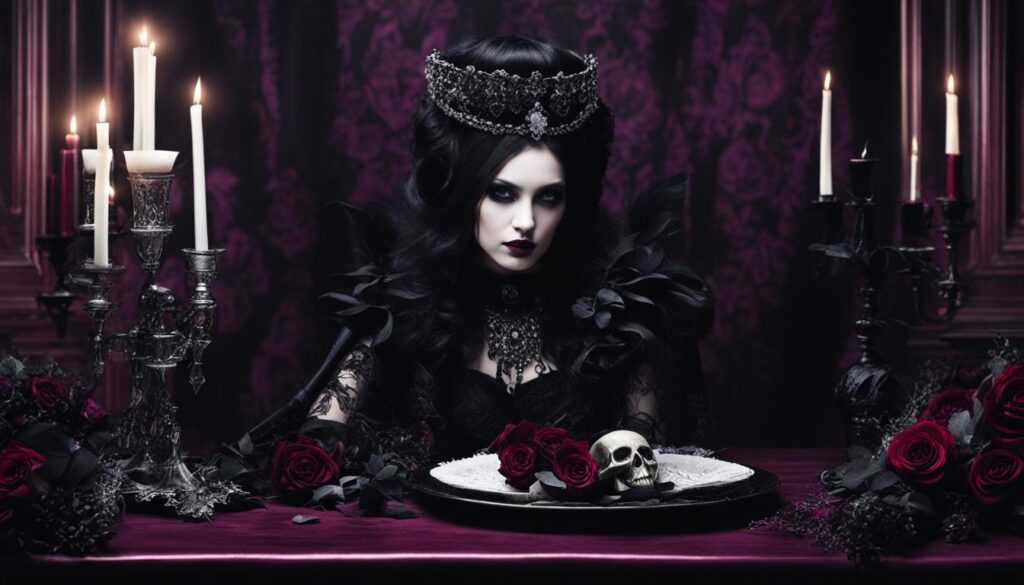
In the realm of visual arts, the gothic subculture has inspired a myriad of artists to explore themes of darkness, melancholy, and mysticism. Gothic-inspired artwork often features intricate details, macabre imagery, and a sense of romanticized decay. From traditional paintings to modern digital art, the gothic subculture continues to provide a rich tapestry of inspiration for artists around the world.
“The gothic subculture not only offers a unique artistic and musical experience but also provides a haven for individuals who resonate with its dark and introspective themes. Its influence can be seen and felt across various facets of popular culture, creating a lasting impact that extends far beyond its origins.”
In movies and television, gothic themes and characters have become iconic fixtures. Whether it’s the brooding vampire in “Interview with the Vampire” or the darkly romantic tale of “Edward Scissorhands,” gothic elements have added depth and intrigue to countless films and TV shows. The gothic subculture’s fascination with the eerie, the supernatural, and the mysterious continues to captivate audiences and inspire storytellers to this day.
From fashion to music, art to entertainment, the gothic subculture has carved out its own unique space in popular culture. Its influence continues to resonate, inviting individuals to explore their dark and introspective sides in a world where the gothic aesthetic reigns supreme.
The Legacy of Goth Rock
Goth rock, with its haunting melodies and dark aesthetic, has left an indelible mark on music and culture. Its legacy is evident in the continued influence it has on various subgenres and alternative rock as a whole. The genre’s unique sound and introspective themes have resonated with countless fans, making it a lasting and beloved genre that transcends time.
One of goth rock’s most significant contributions is the inspiration it has provided for subsequent subgenres such as industrial and darkwave. These genres have taken elements of goth rock and evolved them into their own distinct sounds, expanding the reach and impact of goth rock’s influence. The brooding atmospheres, poignant lyrics, and mesmerizing performances that characterized goth rock continue to captivate audiences, ensuring its relevance in contemporary music.
Moreover, goth rock’s enduring legacy can be witnessed in the enduring popularity of influential bands and albums. Pioneering acts like Bauhaus, Siouxsie and the Banshees, The Cure, and Sisters of Mercy have all made their mark on the genre, creating music that has stood the test of time. Albums such as “Bela Lugosi’s Dead” by Bauhaus and “Disintegration” by The Cure not only defined the sound of goth rock but also influenced a generation of musicians.
The goth rock movement has also had a profound impact on fashion, art, and popular culture. Its dark and mysterious aesthetic has inspired countless fashion trends and continues to be a source of inspiration for designers and individuals seeking to express their individuality. Gothic-inspired characters and themes have appeared in movies, TV shows, and other forms of entertainment, further solidifying goth rock’s place in popular culture.
Goth Rock in Contemporary Times
Although goth rock reached its peak in the 1980s, the genre continues to thrive and evolve in contemporary times. Today, there is a dedicated following for goth rock, with bands and artists keeping the spirit of the genre alive. These modern goth rock bands incorporate elements of the classic goth sound while bringing their own unique style to the table.
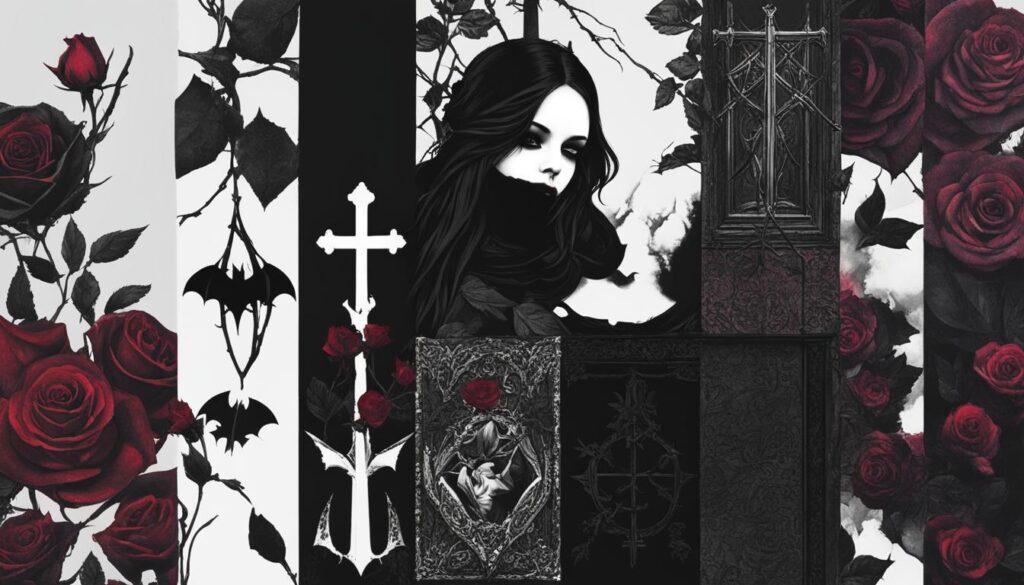
Contemporary goth rock music often features a blend of electronic elements, atmospheric soundscapes, and haunting vocals. Bands such as She Past Away, Drab Majesty, and Lebanon Hanover are at the forefront of the modern goth rock scene, captivating audiences with their dark and introspective music. Their influences may range from classic goth rock bands to other subgenres like post-punk and darkwave, resulting in a fresh and innovative sound.
In addition to the music, goth rock fashion remains relevant in contemporary times. While the iconic black attire and dramatic aesthetics remain a cornerstone of the goth rock look, new interpretations and trends have emerged. From modern goth icons like Kim Kardashian and Megan Cox to fashion designers who draw inspiration from the gothic subculture, goth fashion continues to influence the mainstream.
Exploring Contemporary Goth Rock
- Discover the modern goth rock bands pushing the boundaries of the genre.
- Immerse yourself in haunting melodies and atmospheric soundscapes.
- Explore the evolving goth rock fashion trends and find inspiration for your own unique style.
- Stay up to date with the latest releases and developments in the goth rock scene.
Whether you’re a long-time fan of goth rock or new to the genre, there’s a wealth of contemporary artists, music, and fashion to delve into. Experience the dark allure and timeless appeal of goth rock in the modern era.
Exploring Goth Rock Today
Despite emerging in the early 1980s, the goth rock genre continues to thrive in contemporary times. Many bands today are dedicated to keeping the spirit of goth rock alive, infusing it with new sounds and innovations while staying true to its dark and introspective nature. These bands are the torchbearers of the goth rock movement, captivating audiences with their unique blend of haunting melodies and thought-provoking lyrics.
One notable goth rock band today is She Past Away. Hailing from Turkey, their music evokes a sense of gloomy nostalgia with their brooding vocals and atmospheric guitar riffs. Their album “Belirdi Gece” showcases their signature goth rock sound, making them a standout in the contemporary goth rock scene.
Another influential goth rock band is Drab Majesty. With their dreamy synth-pop sound infused with dark and ethereal elements, Drab Majesty creates a mesmerizing musical experience. Their album “The Demonstration” takes listeners on a journey through introspection and introspection, solidifying their place in the modern goth rock landscape.
Lebanon Hanover is yet another band making waves in the goth rock scene today. Known for their melancholic and atmospheric sound, Lebanon Hanover combines haunting melodies with introspective lyrics. Their album “Why Not Just Be Solo” showcases their unique blend of goth rock and post-punk influences, attracting a dedicated following.
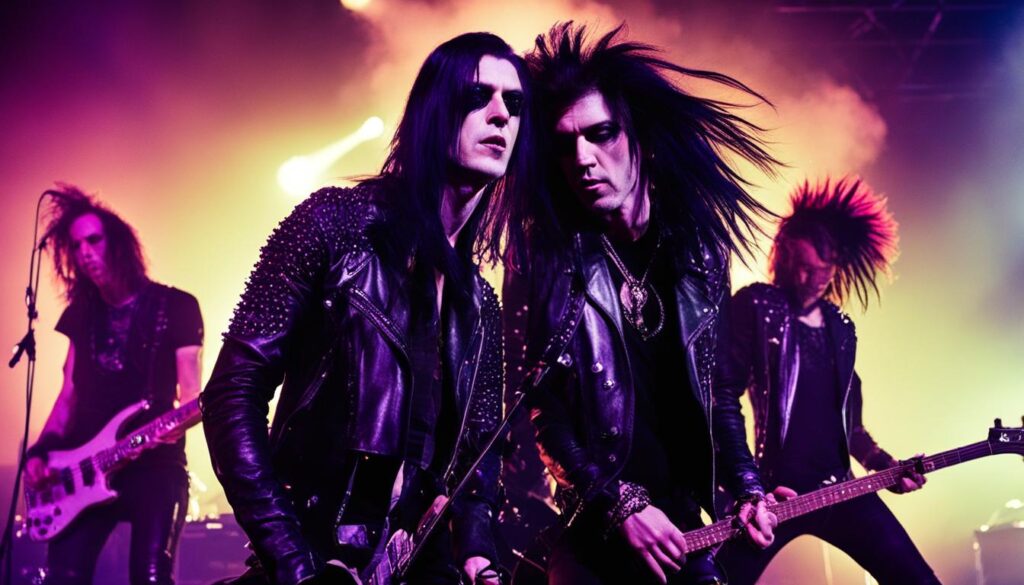
Embracing the Goth Rock Aesthetic
Are you ready to delve into the dark and mysterious world of goth rock? Embracing the goth rock aesthetic allows you to express your individuality and explore the enigmatic side of fashion. From incorporating elements of gothic fashion into your everyday wardrobe to finding inspiration in goth rock music and art, there are countless ways to embrace this captivating subculture and make it your own.
One of the key aspects of embracing the goth rock aesthetic is through fashion. Explore the allure of dark and dramatic attire, with a focus on black and red hues, luxurious fabrics like velvet and leather, and intricate details such as lace and gloves. By incorporating these elements into your outfits, you can channel the hauntingly beautiful aesthetic that defines the goth rock style.
But goth rock isn’t just about fashion. It’s a lifestyle that encompasses music, art, and literature. Dive into the world of goth rock bands, from the pioneers of the genre like Bauhaus and The Cure to contemporary bands like She Past Away and Drab Majesty. Immerse yourself in the introspective lyrics and haunting melodies that characterize this unique genre. Let the music inspire you and become a soundtrack to your gothic journey.
Lastly, don’t forget to seek inspiration from the rich and diverse goth rock art scene. Explore the works of gothic artists and photographers, soaking in the mystical and macabre visuals that capture the essence of the goth rock aesthetic. From dark, ethereal landscapes to haunting portraits, let these artworks ignite your creativity and deepen your connection to the goth rock subculture.
FAQ
What is goth rock?
Goth rock is a subgenre of music that emerged in the early 1980s in the United Kingdom. Influenced by gothic fiction, horror movies, and music styles like deathrock and darkwave, goth rock is characterized by its eerie, antiquated, and mysterious aesthetic.
What is the history of goth rock?
Goth rock originated in the UK in the early 1980s and is associated with the gothic subculture. It drew influences from gothic fiction and horror movies, incorporating elements like Victorian and Edwardian attire. The genre has since evolved and continues to have a dedicated following.
What is traditional goth fashion?
Traditional goth fashion emerged in the early 1980s and is characterized by smoky eye makeup, black lipstick, and edgy attire like leather pants, fishnet stockings, metal belts, and leather boots. It is often associated with the punk and glam rock scenes of that era, and it has experienced a resurgence in recent years.
What is Victorian goth fashion?
Victorian goth fashion is inspired by Victorian literature and combines romance and mystery. Attire for this style includes veils, corsets, flowy dresses in shades of orange, red, purple, and black, as well as gloves, fishnet stockings, and crowns.
How has gothic fashion influenced music?
Gothic fashion has influenced the performances and album artwork of goth rock bands. The fashion and music of the gothic subculture have become intertwined, creating a unique and captivating atmosphere. Goth rock bands have also incorporated the gothic aesthetic into their lyrics, exploring dark and introspective themes.
Who are some influential goth rock bands?
Some influential goth rock bands include Bauhaus, Siouxsie and the Banshees, The Cure, and Sisters of Mercy. Their albums, such as “Bela Lugosi’s Dead” by Bauhaus and “Disintegration” by The Cure, helped shape the sound and aesthetic of goth rock.
What are goth rock lyrics like?
Goth rock lyrics often explore dark and introspective themes, delving into topics like mortality, love, and existentialism. The poetic and sometimes melancholic nature of goth rock lyrics adds depth and emotion to the music, resonating with fans of the genre.
What are the aesthetics of goth rock fashion?
Goth rock fashion is known for its dramatic and spooky aesthetics. The use of black and red, combined with fabrics like velvet, leather, lace, and gloves, creates an opulent and mysterious look. Accessories like antique-style jewelry and dark nail polish complete the goth rock aesthetic.
How has the gothic subculture influenced popular culture?
The gothic subculture has made its mark on popular culture, influencing fashion, music, art, movies, and TV shows. Gothic-inspired characters and themes have appeared in various forms of entertainment, captivating audiences with their dark and intriguing allure.
What is the legacy of goth rock?
Goth rock’s legacy continues to influence music and culture. The genre has inspired subsequent subgenres like industrial and darkwave and has left an indelible mark on alternative rock. Goth rock’s unique aesthetic and introspective themes have resonated with countless fans, making it a lasting and beloved genre.
How is goth rock relevant today?
Goth rock still has a dedicated following and continues to evolve. Contemporary goth rock bands incorporate modern elements while staying true to the genre’s roots. Goth rock fashion also remains relevant, with new interpretations and trends emerging in the fashion world.
Who are some goth rock bands today?
Some goth rock bands keeping the genre alive today include She Past Away, Drab Majesty, and Lebanon Hanover. These bands create new and innovative music while staying true to the dark and introspective nature of goth rock.
How can I embrace the goth rock aesthetic?
Embracing the goth rock aesthetic can be a way to express individuality and embrace the dark and mysterious side of fashion. From incorporating elements of gothic fashion into your everyday wardrobe to exploring goth rock music and art, there are countless ways to embrace the goth rock aesthetic and make it your own.
Source Links
- https://www.fashiongonerogue.com/gothic-fashion-unveiling-mystery/
- https://neonmusic.co.uk/exploring-the-impact-of-the-cramps-on-netflixs-wednesday-unveiling-the-mystery-of-the-goo-goo-muck/
- https://www.atmostfear-entertainment.com/opinions/spirituality/origins-lifestyle-definitions-gothic-subculture/
